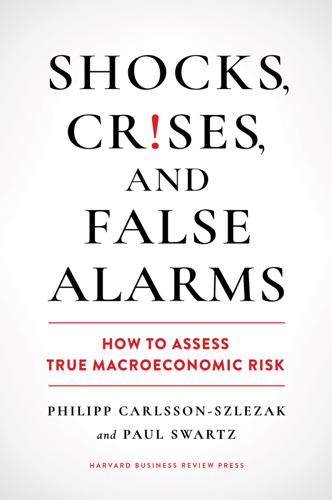
Shocks, Crises, and False Alarms: How to Assess True Macroeconomic Risk
by
Philipp Carlsson-Szlezak
and
Paul Swartz
Published 8 Jul 2024
Figure 8.2 shows the enormous investment in ICT starting in the 1970s that nonetheless left productivity growth as a flat line—until it shifted up in the mid-1990s. In an often quoted quip, the economist Robert Solow in 1987 lamented that “you can see the computer age everywhere but in the productivity statistics.”8 Yes, what is today referred to as the Solow paradox was on full display in 1987. But 10 years later, the productivity surge had arrived. The magnitude of the productivity growth upshift in basis points (bps): 100. Relative to long-run trends in productivity growth—before and after—100 bps was a significant discontinuity. In a sign of how impressive this surge was interpreted to be, the upshift transformed the policy debate of the 1990s, driving belief in a permanently high-growth economy, persuading monetary policymakers to hold off on rate hikes, and equity markets to be exuberant.
…
See quantitative easing (QE) quality-of-life adjustments, 87 quantification, 21 geopolitical, 211–212 quantitative easing (QE), 113–115, 113f, 186–187 railroad bubble, 182, 189 rational optimism, 8, 12, 26, 30, 244, 255 Reagan, Ronald, 106, 108–110, 109f real economy cyclical risk profiles and, 33–44 growth narratives and, 55–66 magical growth models and, 67–77 recoveries and, 45–54, 48f risks, 29f real-economy recessions, 34, 36 cyclical risk profile for, 37–38, 37f decline of, 37–38 macroeconomic impact of, 42f risk assessment for, 41–42 real linkages, of geopolitical shocks, 213–214, 218 recessions, 14 cyclical risk profile and, 33–44 false alarms about, 24–25 future risk of, 246–247 intensity of and recovery, 53–54 interest rates and, 164 postpandemic predictions of, 6, 24–25 probabilities of, 34–36 risk of compared to mortality risk, 36–37 types of, 34 typology and macroeconomic impact of, 42–43, 42f recoveries, 14 how they happen, 45–54 postpandemic, 51, 52f shapes of, 46–47, 47f structural impact and, 45–46 supply side in, 47–51 tendencies vs. destiny in, 51–53 regulation, 25, 249 bubbles and, 111, 183, 188 technology and, 95, 98 Reinhart, Carmen, 170 relative cost advantage, 89 reserve currency status, 14, 231–239, 251 benefits of, 233–234 burdens of, 234–238 debt dynamics and, 174 enablers of, 233–234 evaluating threats to, 238–239 as exorbitant privilege, 233–235 financial divergence and, 204–205 reshoring, 225 retraining, 100 Rogoff, Kenneth, 170 Roosevelt, Franklin D., 121 Roubini, Nouriel, 51, 237 r-star (r*), 156–157, 157f, 167 Russia, 123 BRICS and, 231, 238 Crimea annexed by, 203 Ukraine war and, 186 sanctions, 214, 238 scarcity, productivity and, 90 scenarios geopolitical, 212–214 in geopolitical assessment, 208–209 for risk assessment, 28, 44 Seattle WTO riots, 201 security convergence, 198 semiconductors, 7, 45, 225 separation, trade and, 224–225 services labor costs and technology in, 83–84, 87f prices in, 85–88, 86f productivity and, 64, 88–89 real recession risk and, 38 technology, growth, and, 81–82, 82f shocks, 4–7, 244 Shriver, Lionel, 169 Silicon Valley Bank collapse, 41, 188 skepticism toward doom and gloom, 10 toward theories, 21–22 societal frictions, productivity and, 94 soft landings, 39–40, 144, 145 Solow, Robert, 57, 96 Solow paradox, 96 Sony, 73 South Africa, 231, 238 South Korea, 123 Soviet Union Cold War trade with, 224–225 experts’ predictions on, 209–210 gravity of growth in, 68 magical growth models on, 68, 71–72 stagflation, 248–249 Steffens, Lincoln, 72 stimulus, 14, 29f, 249 analysis framework for, 115–116, 115f bubbles fostered by, 105, 110–112, 111f compulsive machine of, 105–116 culture of, 40 enablers of, 116 existential, 105, 106, 113, 115–116, 117–125 objectives of, 115–116, 115f potential for failure of, 116, 117–125 Reagan and, 108–110, 109f recoveries and, 50 risk created by, 105 systemic risk and, 112–115, 114f tactical, 29f, 105, 125, 127–136, 249 willingness and ability to use, 106–108, 115–116, 117 Stock, James, 238 strains, good, 14, 161 capital allocation and, 167 future of, 244, 247–250, 252 stress tests, for financial systems, 188 strongman leaders, 203 structural impacts, recoveries and, 45–46 structural inflation, 29f demand and, 140 false alarms about, 24 regime in, 137–148, 138f, 139f structural risks, 19, 19f Summers, Larry, 145 Sun Yeli, 76 superabundance, 101 supply cyclical vs. structural inflation and, 140 economic policies and, 48–50 growth and, 57–59 postpandemic inflation and, 142–143, 142f recoveries and, 47–51, 54 Susskind, Daniel, 99 SWIFT payment system, 231, 238 tactical risks, 19 tactical stimulus, 29f, 105, 125, 127–136, 249 future of, 135–136 limitations of, 127–128 market offset and, 128, 129f, 132–133 market vetoes of, 127–129 monetary policy and, 128, 129–131, 129f, 130f policy offset and, 128, 129f, 133–134 political objections to, 128, 129f, 131–132 risks to, 128–129, 129f UBI, MMT, and, 134–135 TARP.
…
The story goes that productivity in services is much higher than it seems, because the statistics fail to capture the value of qualitative changes in products and services fully. If those were accounted for accurately, the price index would be lower, real output higher—and there would be no productivity paradox. Why? Consider first a case where measurement is easy. If computing power doubles and the price stays the same, the price of computing power has fallen by half. If you spend the same in nominal terms on computing, you’re now buying twice as much output. In this example, the accounting for the changing nature of output (so-called hedonic adjustments done by national statistical agencies) and, along with it, the measuring of productivity growth, is relatively simple.

Automation and the Future of Work
by
Aaron Benanav
Published 3 Nov 2020
Not if Robots Have Their Way,” New York Times, January 30, 2018. 11 Quoted in Brynjolfsson and McAfee, Second Machine Age, p. 100. 12 Ibid., pp. 43–5. 13 See Martin Neil Baily and Barry P. Bosworth, “US Manufacturing: Understanding Its Past and Its Potential Future,” Journal of Economic Perspectives, vol. 28, no. 1, 2014; Daron Acemoglu et al., “Return of the Solow Paradox? IT, Productivity, and Employment in US Manufacturing,” American Economic Review, vol. 104, no. 5, 2014; and Susan Houseman, “Understanding the Decline of US Manufacturing Employment,” Upjohn Institute Working Paper 18-287, 2018. 14 Baily and Bosworth, “US Manufacturing,” p. 9. Computers and electronics count for 10 to 15 percent of US manufacturing output. 15 Daniel Michaels, “Foreign Robots Invade American Factory Floors,” Wall Street Journal, March 26, 2017. 16 The countries with the highest levels of installed industrial robots per 10,000 manufacturing employees in 2016 included South Korea (631), Singapore (488), Germany (309), and Japan (303), as compared to the United States (189) and China (68), according to the International Federation of Robotics, “Robot Density Rises Globally,” IFR Press Releases, February 7, 2018. 17 In standard economic accounting, value added is equivalent to the income earned in wages and profits after other intermediate costs have been deducted from total revenue. 18 This equation excludes the so-called small term, ΔPΔE, as insignificant.
…
Manufacturing employment grew most rapidly precisely in those lines where technical innovation was happening at the fastest pace, because it was in those lines that prices fell the fastest, stoking the growth of demand for products.6 That era is long over. Over the past fifty years, industrialization has given way to deindustrialization, and not just in any one line, but across the manufacturing sectors of most countries.7 The Productivity Paradox In the scholarly literature, deindustrialization is “most commonly defined as a decline in the share of manufacturing in total employment.”8 That share fell first of all across the high-income world, starting in the late 1960s and early 1970s. Manufacturing employed 22 percent of all workers in the United States in 1970, a share that declined to just 8 percent in 2017.
…
It is on this basis that commentators typically cite rapidly rising labor productivity, rather than an influx of low-cost imports from abroad, as the primary cause of industrial job loss in advanced economies.10 On closer inspection, however, this explanation also turns out to be inadequate. Manufacturing productivity has been growing at a sluggish pace for decades, leading economist Robert Solow to quip, “We see the computer age everywhere, except in the productivity statistics.”11 Automation theorists discuss this “productivity paradox” as a problem for their account—explaining it in terms of weak demand for products, or the persistent availability of low-wage workers—but they understate its true significance. This is partly due to the appearance of steady labor-productivity growth in US manufacturing, at an average rate of around 3 percent per year since 1950.

Architects of Intelligence
by
Martin Ford
Published 16 Nov 2018
Demand is a big part of the story, but I think there is also the technology lag story that you mentioned. To your original question, I had the pleasure between 1999 and 2003 to work with one of the academic advisors of the McKinsey Global Institute, Bob Solow, the Nobel laureate. We were looking at the last productivity paradox back in the late 1990s. In the late ‘80s, Bob had made the observation that became known as The Solow Paradox, that you could see computers everywhere except in the productivity numbers. That paradox was finally resolved in the late ‘90s, when we had enough demand to drive productivity growth, but more importantly, when we had very large sectors of the economy—retail, wholesale, and others—finally adopting the technologies of the day: client-server architectures, ERP systems.
…
But retail is a very large sector with many, many small- and medium-sized businesses. That already tells you that even in retail, one of the large sectors which we’d think of as highly digitized, in reality, it turns out we really haven’t yet made much widespread progress yet. So, we may be going through another round of the Solow paradox. Until we get these very large sectors highly digitized and using these technologies across business processes, we won’t see enough to move the national needle on productivity. MARTIN FORD: So, you’re saying that globally we haven’t even started to see to the impact of AI and advanced forms of automation yet?
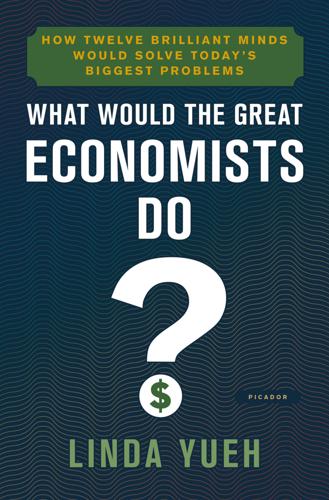
What Would the Great Economists Do?: How Twelve Brilliant Minds Would Solve Today's Biggest Problems
by
Linda Yueh
Published 4 Jun 2018
Curiously, recent technological improvements, centred on computing, information and communication technologies (ICT) and the internet, do not seem to have raised productivity across the economy. Solow’s 1987 observation that ‘You can see the computer age everywhere but in the productivity statistics’ is known as the Solow paradox.6 He revisited this question decades later, but concluded that we still do not know, as the role of computing is still evolving. Solow points out that since our lives and work have been transformed by computers, this technology should have improved our productivity. But productivity growth was slow from around 1970 to 1995, which is the period when computing took off.
…
Cooper Distinguished Contemporaries Collection, 1 September; www.wnyc.org/story/paul-samuelson/ Crafts, Nicholas, 2005, ‘The First Industrial Revolution: Resolving the Slow Growth/Rapid Industrialization Paradox’, Journal of the European Economic Association, 3(2/3), pp. 525–34 David, Paul A., 1990, ‘The Dynamo and the Computer: A Historical Perspective on the Modern Productivity Paradox’, American Economic Review, 80(2), pp. 355–61 De Vecchi, Nicolò, 2006, ‘Hayek and the General Theory ’, European Journal of the History of Economic Thought, 13(2), pp. 233–58 Dworkin, Ronald W., 2015, How Karl Marx Can Save American Capitalism, Lanham, MD: Lexington Books Ebenstein, Alan, 2001, Friedrich Hayek: A Biography, New York: St.
…
Robert Solow, 1956, ‘A Contribution to the Theory of Economic Growth’, Quarterly Journal of Economics, 70(1), pp. 65–94; Robert Solow, 1957, ‘Technical Change and the Aggregate Production Function’, Review of Economics and Statistics, 39(3), pp. 312–20. 6. Paul A. David, 1990, ‘The Dynamo and the Computer: A Historical Perspective on the Modern Productivity Paradox’, American Economic Review, 80(2), pp. 355–61. 7. Douglas Clement, 2002, ‘Interview with Robert Solow’, The Region, Federal Reserve Bank of Minneapolis, 1 September; www.minneapolisfed.org/publications/the-region/interview-with-robert-solow 8. OECD, 2015, Economic Surveys: United Kingdom, Paris: OECD. 9.
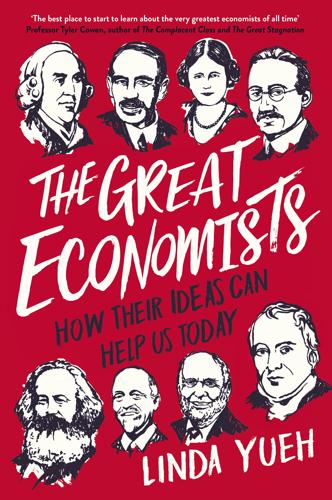
The Great Economists: How Their Ideas Can Help Us Today
by
Linda Yueh
Published 15 Mar 2018
Curiously, recent technological improvements, centred on computing, information and communication technologies (ICT) and the internet, do not seem to have raised productivity across the economy. Solow’s 1987 observation that ‘You can see the computer age everywhere but in the productivity statistics’ is known as the Solow paradox.6 He revisited this question decades later, but concluded that we still do not know, as the role of computing is still evolving. Solow points out that since our lives and work have been transformed by computers, this technology should have improved our productivity. But productivity growth was slow from around 1970 to 1995, which is the period when computing took off.
…
Robert Solow, 1956, ‘A Contribution to the Theory of Economic Growth’, Quarterly Journal of Economics, 70(1), pp. 65–94; Robert Solow, 1957, ‘Technical Change and the Aggregate Production Function’, Review of Economics and Statistics, 39(3), pp. 312–20. 6. Paul A. David, 1990, ‘The Dynamo and the Computer: A Historical Perspective on the Modern Productivity Paradox’, American Economic Review, 80(2), pp. 355–61. 7. Douglas Clement, 2002, ‘Interview with Robert Solow’, The Region, Federal Reserve Bank of Minneapolis, 1 September; www.minneapolisfed.org/publications/the-region/interview-with-robert-solow 8. OECD, 2015, Economic Surveys: United Kingdom, Paris: OECD. 9.
…
Cooper Distinguished Contemporaries Collection, 1 September; www.wnyc.org/story/paul-samuelson/ Crafts, Nicholas, 2005, ‘The First Industrial Revolution: Resolving the Slow Growth/Rapid Industrialization Paradox’, Journal of the European Economic Association, 3(2/3), pp. 525–34 David, Paul A., 1990, ‘The Dynamo and the Computer: A Historical Perspective on the Modern Productivity Paradox’, American Economic Review, 80(2), pp. 355–61 De Vecchi, Nicolò, 2006, ‘Hayek and the General Theory’, European Journal of the History of Economic Thought, 13(2), pp. 233–58 Dworkin, Ronald W., 2015, How Karl Marx Can Save American Capitalism, Lanham, MD: Lexington Books Ebenstein, Alan, 2001, Friedrich Hayek: A Biography, New York: St.

Power and Progress: Our Thousand-Year Struggle Over Technology and Prosperity
by
Daron Acemoglu
and
Simon Johnson
Published 15 May 2023
American Economic Review 108, no. 11: 3450‒3491. Acemoglu, Daron, and David H. Autor. 2011. “Skills, Tasks and Technologies: Implications for Employment and Earnings.” Handbook of Labor Economics 4:1043‒1171. Acemoglu, Daron, David H. Autor, David Dorn, Gordon H. Hanson, and Brendan Price. 2014. “Return of the Solow Paradox? IT, Productivity, and Employment in US Manufacturing.” American Economic Review 104, no. 5: 394‒399. Acemoglu, Daron, David H. Autor, David Dorn, Gordon H. Hanson, and Brendan Price. 2016. “Import Competition and the Great U.S. Employment Sag of the 2000s.” Journal of Labor Economics 34:S141‒S198.
…
Before the Storm: Barry Goldwater and the Unmaking of the American Consensus. New York: Bold Type Books. Pethokoukis, James. 2016. “The Productivity Paradox: Why the US Economy Might Be a Lot Stronger Than the Government Is Saying.” AEI Blog, May 20. www.aei.org/technology-and-innovation/the-productivity-paradox-us-economy-might-be-a-lot-stronger. Pethokoukis, James. 2017a. “Google Economist Hal Varian Tries to Explain America’s Productivity Paradox, and How Workers Should Deal with Automation,” May 5. www.aei.org/economics/google-economist-hal-varian-tries-to-explain-americas-productivity-paradox-and-how-workers-should-deal-with-automation. Pethokoukis, James. 2017b.
…
“The Adjustment of Labor Markets to Robots.” Journal of the European Economic Association 19, no. 6: 3104‒3153. Davenport, Thomas H. 1992. Process Innovation: Reengineering Work Through Information Technology. Cambridge, MA: Harvard Business Review Press. David, Paul A. 1989. “Computer and Dynamo: The Modern Productivity Paradox in a Not-Too-Distant Mirror.” www.gwern.net/docs/eco nomics/automation/1989-david.pdf. David, Paul A., and Gavin Wright. 2003. “General Purpose Technologies and Surges in Productivity: Historical Reflections on the Future of the ICT Revolution.” In The Economic Future in Historical Perspective, edited by Paul A.
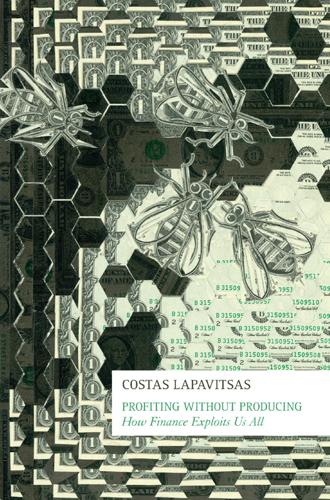
Profiting Without Producing: How Finance Exploits Us All
by
Costas Lapavitsas
Published 14 Aug 2013
Looking more closely at figure 6, from the middle of the 1970s to the middle of the 1990s, productivity growth was broadly flat or declining, including in the US, the leading country in introducing the new technologies of the era.14 Robert Solow observed that ‘You can see the computer age everywhere but in the productivity statistics’, and his quip became the ‘Solow Paradox’ characteristic of the new era.15 After 1995, however, significant technological improvements in the microprocessor industry and faster productivity growth in general seemed to materialize for the US economy. A debate took place within mainstream economics in the second half of the 1990s regarding the validity of the upsurge.
…
Dallery, Thomas, ‘Post-Keynesian Theories of the Firm under Financialization’, Review of Radical Political Economics 41:4, 2009, pp. 492–515. Dalton, George, ‘Primitive Money’, American Anthropologist 67:1, Feb. 1965, pp. 44–65. David, Paul A., ‘The Dynamo and the Computer: An Historical Perspective on the Modern Productivity Paradox’, American Economic Review 80:2, 1990, pp. 355–61. Day, Richard B., The Crisis and the ‘Crash’, London: NLB, 1981. De Brunhoff, Suzanne, Marx on Money, New York: Urizen Books, 1976. De Grauwe, Paul, ‘The ECB as a Lender of Last Resort’, VoxEU, October 2011. De Grauwe, Paul, ‘The European Central Bank: Lender of Last Resort in the Government Bond Markets?’

The Rise and Fall of American Growth: The U.S. Standard of Living Since the Civil War (The Princeton Economic History of the Western World)
by
Robert J. Gordon
Published 12 Jan 2016
Federal Reserve Bank of New York 20, no. 1: 1–8. Abramowitz, Moses, and David, Paul A. (2000). “American Macroeconomic Growth in the Era of Knowledge-Based Progress: The Long-Run Perspective,” in Engerman and Gallman (2000), pp. 1–92. Acemoglu, Daron, Autor, David H., Dorn, David, Hanson, Gordon, and Price, Brendan. (2014). “Return of the Solow Paradox? IT, Productivity, and Employment in U.S. Manufacturing,” NBER Working Paper 19837, January. Acs, Zoltan J., and Lyles, Alan. (2007). Obesity, Business and Public Policy. Cheltenham, UK/Northhampton, MA: Edward Elgar. Aeppel, Timothy. (2015). “Jobs and the Clever Robot,” Wall Street Journal, February 25, pp.
…
“The Consequences of Childhood Overweight and Obesity,” The Future of Children 16, no. 1 (spring): 47–67. Darby, Michael. (1976). “Three-and-a-Half Million U.S. Employees Have Been Mislaid: Or, an Explanation of Unemployment, 1934–1941.” The Journal of Political Economy. 84, no. 1 (February): 1–16. David, Paul A. (1990). “The Dynamo and the Computer: An Historical Perspective on the Modern Productivity Paradox,” American Economic Review Papers and Proceedings 80, no. 2 (May): 355–61. Davis, Steven J., and Haltiwanger, John. (2014). “Labor Market Fluidity and Economic Performance,” NBER Working Paper 20479, September. Decker, John, Haltiwanger, John, Jarmin, Ron S., and Miranda, Javier. (2014).
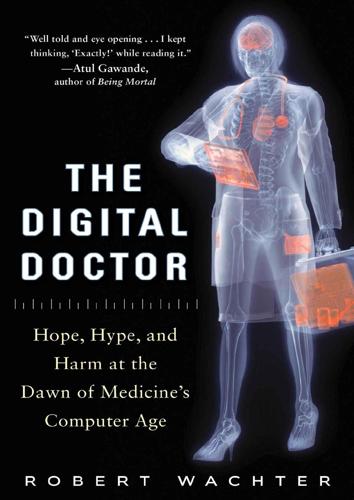
The Digital Doctor: Hope, Hype, and Harm at the Dawn of Medicine’s Computer Age
by
Robert Wachter
Published 7 Apr 2015
Shekelle, “Health Information Technology: An Updated Systematic Review with a Focus on Meaningful Use,” Annals of Internal Medicine 160:48–54 (2014). 248 Julia Adler-Milstein, a professor at the University of Michigan Interview of AdlerMilstein by the author, June 27, 2014. 248 Ashish Jha … recalled the cheerleading about efficiency Interview of Jha by the author, July 2, 2014. 248 Spencer Jones and colleagues from RAND considered the IT productivity paradox S. S. Jones, P. S. Heaton, R. S. Rudin, and E. C. Schneider, “Unraveling the IT Productivity Paradox—Lessons for Health Care,” New England Journal of Medicine 366:2243–2245 (2012). 249 Peter Drucker … presciently described P. F. Drucker, “The Coming of the New Organization,” Harvard Business Review, January 1988. 250 “Organizational factors that unlock the value of IT” E. Brynjolfsson and L. M. Hitt, “Beyond the Productivity Paradox: Computers Are the Catalyst for Bigger Changes,” Communications of the ACM 41:49–55 (1998). 250 The business model of “creative destruction” J.
…
The history of technology tells us that it is these financial, environmental, and organizational factors, rather than the digital wizardry itself, that determine the success and impact of new IT tools. This phenomenon is known as the “productivity paradox” of information technology. 38 The name comes from the fact that Gross and Tecco decided to launch the organization while sitting in Harvard Business School’s Rock Hall. Chapter 26 The Productivity Paradox You can see the computer age everywhere but in the productivity statistics. —Nobel Prize–winning MIT economist Robert Solow, writing in 1987 Between the time David Blumenthal stepped down as national coordinator for health IT and became CEO of the Commonwealth Fund, he returned to Boston from 2011 to 2013 to manage the transition of Partners HealthCare from a homegrown electronic health record to the one made by Epic.
…
McAfee, The Second Machine Age: Work, Progress, and Prosperity in a Time of Brilliant Technologies (New York: W. W. Norton, 2014). 244 In a seminal 1993 article E. Brynjolfsson, “The Productivity Paradox of Information Technology,” Communications of the ACM 36:66–77 (1993). 245 after electricity replaced steam engines P. A. David, “The Dynamo and the Computer: An Historical Perspective on the Modern Productivity Paradox,” American Economic Review Papers and Proceedings 1:355–361 (1990). 246 Robert Wah … told me what happened Interview of Wah by the author, August 4, 2014. 246 In 1995, the consulting group Gartner coined Gartner Hype Cycle, available at http://www.gartner.com/technology/research/methodologies/hype-cycle.jsp. 247 One widely cited 2005 RAND study R.

The Technology Trap: Capital, Labor, and Power in the Age of Automation
by
Carl Benedikt Frey
Published 17 Jun 2019
The productivity slowdown appears structural and real. 78. Brynjolfsson, Rock, and Syverson, forthcoming, “Artificial Intelligence and the Modern Productivity Paradox,” 25. 79. C. F. Kerry and J. Karsten, 2017, “Gauging Investment in Self-Driving Cars,” Brookings Institution, October 16. https://www.brookings.edu/research/gauging-investment-in-self-driving-cars/. 80. Brynjolfsson, Rock, and Syverson, forthcoming, “Artificial Intelligence and the Modern Productivity Paradox,” 25. 81. N. F. Crafts and T. C. Mills, 2017, “Trend TFP Growth in the United States: Forecasts versus Outcomes” (Discussion Paper 12029, Centre for Economic Policy Research, London).
…
Ibid. 17. V. Smil, 2005, Creating the Twentieth Century: Technical Innovations of 1867–1914 and Their Lasting Impact (New York: Oxford University Press), 53. 18. Nye, 1990, Electrifying America, 232. 19. P. A. David, 1990, “The Dynamo and the Computer: An Historical Perspective on the Modern Productivity Paradox,” American Economic Review 80 (2): 355–61. 20. W. D. Devine Jr., 1983, “From Shafts to Wires: Historical Perspective on Electrification,” Journal of Economic History 43 (2): 347–72. 21. H. Jerome, 1934, “Mechanization in Industry” (Working Paper 27, National Bureau of Economic Research, Cambridge, MA), 48. 22.
…
Wu et al., 2016, “Google’s Neural Machine Translation System: Bridging the Gap between Human and Machine Translation,” preprint, submitted October 8, https://arxiv.org/pdf/1609.08144.pdf. 12. I. M. Cockburn, R. Henderson, and S. Stern, 2018, “The Impact of Artificial Intelligence on Innovation (Working Paper 24449, National Bureau of Economic Research, Cambridge, MA). 13. E. Brynjolfsson, D. Rock, and C. Syverson, forthcoming, “Artificial Intelligence and the Modern Productivity Paradox: A Clash of Expectations and Statistics,” in The Economics of Artificial Intelligence: An Agenda, ed. Ajay K. Agrawal, Joshua Gans, and Avi Goldfarb (Chicago: University of Chicago Press), figure 1. 14. “Germany Starts Facial Recognition Tests at Rail Station,” 2017, New York Post, December 17. 15.

Social Life of Information
by
John Seely Brown
and
Paul Duguid
Published 2 Feb 2000
New York Times, 2 November, sec. A, p. 16. Arrow, Kenneth J. 1984. "Information and Economic Behavior." In Collected Papers, edited by Kenneth J. Arrow, 136 52. Cambridge: Harvard University Press. Attewell, Paul. 1994. "Information Technology and the Productivity Paradox." In Organizational Linkages: Understanding the Productivity Paradox, edited by D. Harris, 13 53. Washington, DC: National Academy Press. Baker, Nicholson. 1994. "Discards." The New Yorker, 4 April, 65 86. Balzac, Honoré de. 1989. The Rise and Fall of César Birotteau. Translated by Ellen Marriage. New York: Caroll & Graf.
…
The numbers may seem abstract, but their significance can be directly grasped from average earnings. Had growth continued at the 1948 to 1973 rate, U.S. average income in 1994 would have been $47,600. It was, in fact, $35,300. 32 Economists refer to this surprising decline in productivity growth despite massive investment in computers as the "productivity paradox." Paul David, an economist at Stanford University, has argued, however, that the paradoxical slowdown was not such a paradox at all. Looking to the past, he points out that a slump in productivity followed the appearance of industrial-strength dynamos in the 1880s. Economically beneficial effects of the dynamo, David shows, did not appear in productivity data for another three decades.
…
Indeed, we can now see that the heart of managing a business is managing its processes: assuring that they are performing up to their potential, looking for opportunities to make them better, and translating these opportunities into realities. MICHAEL HAMMER, Beyond Reengineering 1 By the late 1980s the cumulative effects of the productivity paradox, the dramatic changes fostered by information technology, the general slowdown in the economy, and the rise in global competition were making business life hell.2 It was clear that current organization structures were not producing a "virtuous circle" between investment and production. But few could imagine what the right organization structure might be.3 The pressure to do something, anything, gave birth to innumerable fashions and fads in management.

The Second Machine Age: Work, Progress, and Prosperity in a Time of Brilliant Technologies
by
Erik Brynjolfsson
and
Andrew McAfee
Published 20 Jan 2014
However, in 1973 productivity growth slowed down (see figure 7.1). In 1987, Bob Solow himself noted that the slowdown seemed to coincide with the early days of the computer revolution, famously remarking, “We see the computer age everywhere, except in the productivity statistics.”4 In 1993, Erik published an article evaluating the “Productivity Paradox” that noted the computers were still a small share of the economy and that complementary innovations were typically needed before general purpose technologies like IT had their real impact.5 Later work taking into account more detailed data on productivity and IT use among individual firms revealed a strong and significant correlation: the heaviest IT users were dramatically more productive than their competitors.6 By the mid-1990s, these benefits were big enough to become visible in the overall U.S. economy, which experienced a general productivity surge.
…
While this rise had a number of causes, economists now attribute the lion’s share of those gains to the power of IT.7 The productivity slowdown in the 1970s, and the subsequent speed-up twenty years later, had an interesting precedent. In the late 1890s, electricity was being introduced to American factories. But the “productivity paradox” of that era was that labor productivity growth did not take off for over twenty years. While the technologies involved were very different, many of the underlying dynamics were quite similar. University of Chicago economist Chad Syverson looked closely at the underlying productivity data and showed how eerily close this analogy is.8 As shown in figure 7.2, the slow start and subsequent acceleration of productivity growth in the electricity era matches well with the speed-up that began in the 1990s.
…
They not only made it possible to increase sales from $1 billion a week in 1993 to $1 billion every thirty-six hours in 2001, but also helped drive dramatic increases in the entire retailing and distribution industries, accounting for much of the additional productivity growth nationwide during this period.11 IT investment soared in the 1990s, peaking with a surge of investment in the latter half of the decade as many companies upgraded their systems to take advantage of the Internet, implement large enterprise systems, and avoid the much-hyped Y2K bug. At the same time, innovation in semiconductors took gigantic leaps, so the surging spending on IT delivered even more rapidly increasing levels of computer power. A decade after the computer productivity paradox was popularized, Harvard’s Dale Jorgenson, working with Kevin Stiroh at the New York Federal Reserve Bank did a careful growth accounting and concluded, “A consensus has emerged that a large portion of the acceleration through 2000 can be traced to the sectors of the economy that produce information technology or use IT equipment and software most intensively.”12 But it’s not just the computer-producing sectors that are doing well.
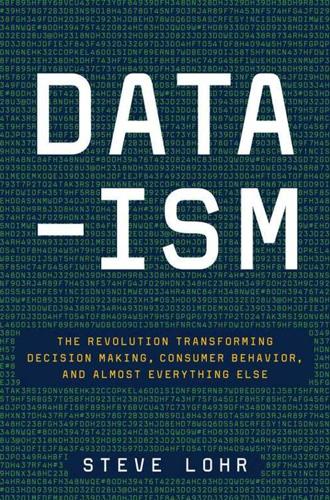
Data-Ism: The Revolution Transforming Decision Making, Consumer Behavior, and Almost Everything Else
by
Steve Lohr
Published 10 Mar 2015
Solow’s critique became known as the productivity paradox. Brynjolfsson, a technology optimist, has two answers for the skeptics. First, he argues, the official statistics do not fully capture the benefits of digital innovation. And second, he says that in technology, revolutions take time. To explain, Brynjolfsson points to his own work on technology and work practices, and to the research of others including a classic study by Paul David, an economic historian at Stanford. In his 1990 paper, “The Dynamo and the Computer: An Historical Perspective on the Modern Productivity Paradox,” David observed that the electric motor was introduced in the early 1880s but did not generate discernible productivity gains until the 1920s.
…
Gallo’s use of, 123–33 Predix, 136 PricewaterhouseCoopers, 44 Principles of Scientific Management, The (Taylor), 208 Privacy Act (1974), 185 privacy concerns, 183–206 balancing privacy and data collection, 202–6 big data and personally identifying information, 187–92 cameras and, 183–86 data correlation and, 113 discrimination by statistical inference, 192–95 early computers and, 185–87 marketing and use of data, 195–97 social network data collection and, 197–202 productivity paradox, of computers, 72–75 Profiles in Performance: Business Intelligence Journeys and the Roadmap for Change (Dresner), 76 psycholinguistics, used for studying tweets, 199 Pulleyblank, William, 45–46, 47–48, 49 quantitative-to-qualitative transformation, data and, 7–8 “reality mining,” 206 Reisman, David, 155 Richardson, Tara, 106–7 Riedl, Paul, 156 Rock Health, 16 Rogers, Matt, 144 romantic relationships, social network research and, 87–88 Rometty, Virginia Haydock and, 156 IBM’s big data strategy and, 9, 42–45, 46, 47, 53–56 Rosenn, Itamar, 89–90, 94 Rotenberg, Marc, 204–5 Rothschild, Jeff, 86, 91–92, 98 Rubinsteyn, Alex, 180 Ruh, William, 134, 135–36 Sabre (Semi-Automated Business Research Environment), 46 Sage Bionetworks, 101–2, 170–71 SAS Institute, 52 satellite imagery, precision agriculture and, 129–32 Schadt, Eric background, 172–73 at Mount Sinai, 171–72, 173–74, 175 Sage Bionetworks and, 102 Schrage, Michael, 197 Science, 108 scientific management (Taylorism), 207–8 Seay, Mike, 188–89 Second Machine Age, The (Brynjolfsson and McAfee), 119–20 Shah, Rachana.

Fully Automated Luxury Communism
by
Aaron Bastani
Published 10 Jun 2019
The United States, which by that time had become the world’s largest and most advanced economy, wouldn’t reach its apogee until 1915 when over 26 million horses lived and worked alongside humans. Within just a few decades, however, they would disappear from the world of work, substituted in a range of tasks by machines which were more reliable, didn’t get sick and, most importantly, led to far greater productivity. Paradoxical as it might seem, we employed animals like never before at the very moment they were becoming obsolete. This was a theme returned to in 1983 by the Nobel Prize–winning economist Wassily Leontief. For Leontief, human labour in the twenty-first century would come to resemble horses at the turn of the twentieth.
…
Now, some said, it was no longer capable of even measuring economic growth properly. This was most famously expressed by the economist Robert Solow when he claimed in 1987 that ‘you can see the computer age everywhere but the productivity statistics.’ That conclusion was a response to the ‘productivity paradox’ which so troubled economists at the time – namely, how investment in information technology over the 1980s had a seemingly negligible impact on productivity measures, which actually slowed over the decade. But what if, rather than digital technologies failing to increase productivity, the changes they wrought were so significant as to require a new way of measuring success altogether?
…
See also resources MinION sequencer, 148 M-Kopa, 109 mode of production, 195 modern welfare state, 213 molecular assembly, 180 Monetary Policy Committee, 229 Moon Express, 124, 125–6, 127, 130 Moore, Gordon, 42–4, 46 Moore’s Law, 41, 44–5, 81, 143, 145 Moravec’s Paradox, 81, 82 Mosa Meats, 172 M-Pesa, 109 municipal protectionism, 207, 212, 213, 216 music industry, 234–5 Musk, Elon, 119–21, 135 MX1, 125 MX9, 125 Myconius, Friedrich, 240 Napster, 154 NASA, 120, 122, 124, 126, 128, 131, 137 National Energy Investment Banks (NEIBs), 219, 221 National Health Service (NHS), 210, 213 nationalisation, 213 near-Earth asteroids (NEAs), 38–9, 130–1 NEAs (near-Earth asteroids), 38–9, 130–1 NEIBs (National Energy Investment Banks), 219, 221 neoliberalism, 26–7, 228 neoliberalism, break with Carillion, 201–3 decarbonisation, 217–23 East Coast Main Line, 203–4 Grenfell Tower, 206–8 Haringey Development Vehicle (HDV), 205 Preston Model, 208–11 Universal Basic Services (UBS), 213–17 worker-owned businesses and banks, 211–12 New Labour, 207 Newcomen, Thomas, 33 Newton, Isaac, 32 NHS (National Health Service), 210, 213 nickel, 118 Nigeria, 107–8 Obama, Barack, 2, 9, 21, 128 Off-Grid, 109–10 One Planet Tax, 222 Orwell, George, 19 Osborne, Michael, 87 OSIRIS-REx study, 131 ouroboros, 205 Outer Space Treaty (1967), 127, 136 outsourcing, 202–4, 207, 217 ‘Oxi’ vote, 28 Passivhaus, 114 ‘peak copper’, 118 peak horse, 72–4 peak human, 74–8 PECO engine, 125 Perfect Day Foods, 178 Peter, 5–6 PETMAN, 82–3 petrol vehicles, 105 phenylketonuria (PKU), 147, 147n Philips, 77–8 phosphorus, 118 photography, 402 photosynthesis, 168 photovoltaic (PV) cells, 47, 102–15 PKU (phenylketonuria), 147, 147n Planetary Resources, 129, 130, 132, 135, 136–7 Podemos party, 27–8, 30 political transformation, vehicles for, 194 politics of anti-austerity, 201 of energy transition, 218 green, 188–92 red, 188–92 relationship between technology and, 237 population, 139–40 The Population Bomb (Ehrlich), 166 populism, 187–8. See also luxury populism Post, Mark, 170–2, 175, 176 post-capitalism information and, 59–60 without communism, 56–9 poverty, 24–5 Preston Model, 208–11, 213 private space industry, 120–1 privatisation, 202–4, 207, 209–10 production, mode of, 195 productivity paradox, 233 productivity revolution, 60–3 progressive procurement, 207 property-owning democracy, 25 prototype politics, 198 PV (photovoltaic) cells, 47, 102–5 radical politics, revival of, 27–8 railway lines, 33–4 realism, capitalist, 17–9 red politics, 188–92 Rees-Mogg, Jacob, 206–7 Reformation, 240, 241 regeneration, 207 Reither, Walter, 70–1 Relativity Space, 123, 124 renewable energy about, 104, 108 financing, 219–20 generating and storing, 218–19 green movement and, 238–9 transitioning to, 218–19 renewables, 106 ‘Reopening the American Frontier: Exploring How the Outer Space Treaty Will Impact American Commerce and Settlement in Space’, 129 Resolution Foundation, 58 resources asteroid mining, 119–20 globalism and, 197 post-scarcity in, 117–37 private space industry, 120–1 space, 119–37 Ricardo, David, 69, 233 rice production, 161–2 Richards, Bob, 124 Rifkin, Jeremy, 79 Rio Earth Summit, 98, 197 robots about, 78, 133 Atlas, 82–3, 132 da Vinci surgery robot, 90 information technology and robotics, 76 ‘KIVA’, 89 rise of, 80–2 Rocket Lab, 121, 122, 123 Romer, Paul, 63–5, 199–200 Roosevelt, Franklin, 194 Rutter, Brad, 80 Sanders, Bernie, 29, 30 Saturn V, 120, 122 Saudi Arabia, 220–1 Schumpeter, Joseph, 36 Scottish National Party, 28 Second Disruption, 11, 32–6, 72–4, 79, 94, 96, 106, 134, 139, 141, 163, 188, 190, 192, 198, 201, 208, 217, 232–3, 236, 238, 241 Selden, Mike, 172, 173 self-regulation, consequences of, 206 ‘Sermon on Indulgences and Grace’ (Luther), 241 Silicon Valley, 196 ‘Six Laws of Technology’ (Kranzberg), 237 Skelton, Noel, 25 Smith, Adam, 69, 233 ‘Social Prosperity for the Future’, 214 socialised capital market, 230–2 socialism, 191 society, electoralism and, 194–6 soil fertility, 118 ‘solar home’, 113–14 solar power/energy about, 101–5, 107 Global South and, 106–11 in Saudi Arabia, 220–1 Solow, Robert, 233 Sondergaard, Peter, 87 space asteroid mining, 133–4 falling costs of, 122–4 mineral wealth in, 134–7 Moon Express, 125–6 near-Earth asteroids (NEAs), 130–1 Outer Space Treaty (1967), 127 as private industry, 120–1 private sector, 132–3 SPACE Act (2015), 2, 9 Space Launch System, 120 Space Shuttle programme, 122 SpaceX, 119–21, 122, 133–4, 156 speculative economy, repressing the, 229–30 Sputnik, 137, 153 state socialism, 213 steam engine, 93, 95, 149, 164, 201, 238 steam power, 33 Summers, Larry, 64–5, 116, 199–200 Supplemental Nutrition Assistance Program, 24 surplus, food, disruptions and, 159–60 sustenance about, 178–9 cultured meat, 170–5 egg whites, 177–9 food, surplus and disruptions, 159–60 meat from vegetables, 175–7 milk, 177–9 planetary limits, 160–4 post-scarcity in, 159–81 synthetic meat, 168–70 wine, 177–81 synthetic meat, 168–70 Syriza, 28, 30 TALEN (transcription activator-like effector-based nucleases), 150 Taylor, Frederick, 60–3, 85 Taylorism, 60–3 technological unemployment, 86–8 technology Marx on, 237 relationship between politics and, 237 Technology and Unemployment report, 53 Terran 1 rocket, 124 Tesla, 84, 85, 106 Thatcher, Margaret, 206–7 Third Disruption, 11, 37–48, 70, 79, 82, 92, 116, 143–4, 148, 156, 171, 185–8, 192–6, 201, 212–4, 217, 221, 226, 232, 234, 236, 238, 241–3 3-D Magnetic Recording technology, 45–6 3-D printing, 122–4, 127 Tithebarn project, 208 transatlantic telegraph cable, 34 transcription activator-like effector-based nucleases (TALEN), 150 transportation, in UK, 215 travel, exponential, 39–40 Trump, Donald, 21, 24, 29, 30 Trussell Trust, 24 Turnspit dog, 72–3 Uber, 84, 85 UBI (Universal Basic Income), 224–6 UBS (Universal Basic Services), 207–8, 213–17, 224, 226, 236 UK ageing in Britain, 141–4 healthcare in, 215–16 transportation in, 215 UKIP, 28 unemployment, 26 unfreedom, 214 unions, in Britain, 211–12 Universal Basic Income (UBI), 224–6 Universal Basic Services (UBS), 207–8, 213–17, 224, 226, 236 University College London, 90 US Department of Agriculture, 178 US Food and Drug Administration, 153 US National Institute of Health, 147 US National Space Council, 129 US Senate Committee on Commerce, Science and Transportation, 129 utopia, from crisis to, 48–9 V2, 137 Valeti, Uma, 173 vegetables, meat from, 175–7 Verne, Jules Around the World in Eighty Days, 33 von Braun, Wernher, 120, 128 voting, 195 wage-labour, 35 Wagner, Erika, 135 Wales, 114 Watson (computer), 80 Watson, James, 144, 149 Watt, James, 33 Watt’s steam engine, 93, 95, 149, 201, 238 The Wealth of Nations (Smith), 69–70 wheat production, 161–2, 165 Whole Foods Market, 88 Wikipedia, 235 wind power/energy, 111–13 windfall tax, 230 wine, cellular agriculture and, 177–81 work, future of, 92–3 worker-owned cooperatives, 209–10 worker-owned economy, 207–8, 211–12, 219 World Bank, 221, 222 Wycliffe, John, 239–41 Xplorer, 132 Yang (factory worker), 1–2 ZFNs (zinc finger nucleases), 150 zinc, 118 zinc finger nucleases (ZFNs), 150 Žižek, Slavoj, 17n

The Flat White Economy
by
Douglas McWilliams
Published 15 Feb 2015
Most other countries likewise account software expenditure in the same way – the difference being that in the UK the FWE sector is larger and the mis-measurement more significant. IT investment as an enabling technology In the 1980s, economic studies seemed not to be able to find much evidence of information technology making much difference to economic growth. This was known at the time as the ‘productivity paradox.’6 Nobel laureate Robert Solow famously quipped “You can see the computer age everywhere except in the productivity statistics”.7 But micro studies since have provided compelling evidence that IT is not only a technology that enhances growth but also one that enables further productivity gains.
…
But you only have to go back to the 1960s to discover that there really was a Golden Age of Parliamentary debate. 4. ‘Understanding National Accounts’, François Lequiller and Derek Blades, 2016, Paris (www.oecd.org/std/na/38451313.pdf). 5. www.bankofengland.co.uk/statistics/Pages/iadb/notesiadb/capexp.aspx 6. The productivity paradox of information technology’, Erik Brynjolfsson, Communications of the ACM 36 (12), 1993, pp66–77. 7. ‘We’d better watch out’, Robert Solow, New York Times Book Review, 12 July, 1987, p.36. 8 scholar.google.co.uk/scholar?start=20&q=information+technology+as+an+enabler&hl=en&as_sdt=0,5&as_vis=1 9.
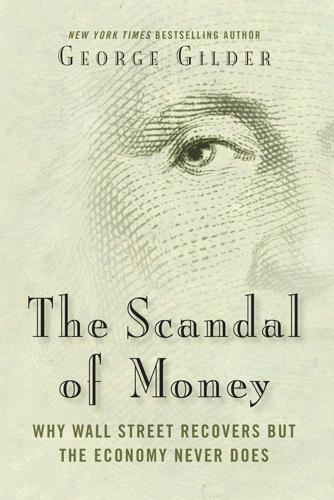
The Scandal of Money
by
George Gilder
Published 23 Feb 2016
Since everyone refused the offer, Summers concludes that, adjusted for quality, healthcare has not risen in price. Thus productivity in healthcare has improved far more than the measured gains. See also Bret Swanson, “Moore’s Law and the Productivity Paradox,” AEIdeas (blog), November 25, 2015, https://www.aei.org/publication/moores-law-and-the-productivity-paradox/. 4.Thomas Piketty, Capital in the Twenty-First Century (Cambridge, MA: Harvard University, Belknap Press, 2014). 5.Ta-Nehisi Coates, Between the World and Me (New York, NY: Spiegel and Grau, 2015). See also Kyle Smith, “The Hard Untruths of Ta-Nehisi Coates: A Bestselling Polemic Riven with Hatred Thrills the Liberal Elite,” Commentary, October 2015, pp. 20–25. 6.Yuval Levin, “The Mobility Crisis,” Commentary, March 2015, pp. 12–20. 7.Kwasi Kwarteng, War and Gold: A 500-Year History of Empires, Adventures, and Debt (New York, NY: PublicAffairs, 2014), 219–20. 8.Peter Thiel with Blake Masters, Zero to One: Notes on Startups, or How to Build the Future (New York, NY: Crown Business, 2014), 5–11 and passim.
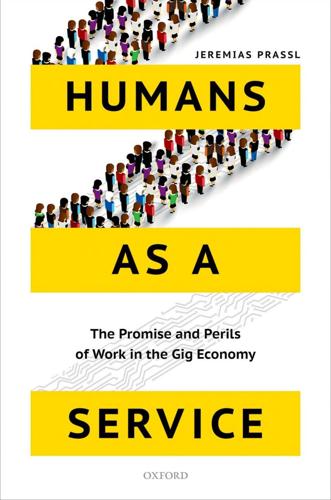
Humans as a Service: The Promise and Perils of Work in the Gig Economy
by
Jeremias Prassl
Published 7 May 2018
As a UK parliamentary committee noted in 1855: [A] much larger body of persons are committed to and detained in the manufac- ture, through successive generation, than can be adequately supported by it, while the gradual working of the ordinary remedy by the withdrawal of superfluous hands is intercepted and frustrated. (Select Committee on the Stoppage of Wages (Hosiery), Report from the Select Committee on Stoppage of Wages (Hosiery) (HC 421-XIV, 1854–5), iv) 73. Ryan Avent, ‘The productivity paradox’, Medium (16 March 2017), https:// medium.com/@ryanavent_93844/the-productivity-paradox-aaf05e5e4aad, archived at https://perma.cc/TFE8-7X8N 74. Select Committee on the Stoppage of Wages (Hosiery), Report from the Select Committee on Stoppage of Wages (Hosiery) (HC 421-XIV, 1854–5), iv. Duncan Bythell agrees: So long as outwork labour remained plentiful and its price fell ever lower, manu- facturers had little incentive to turn to alternative means of production . . . contem- poraries often believed that the very cheapness of hand-labour actually delayed the adoption of newly invented labour-saving machines.
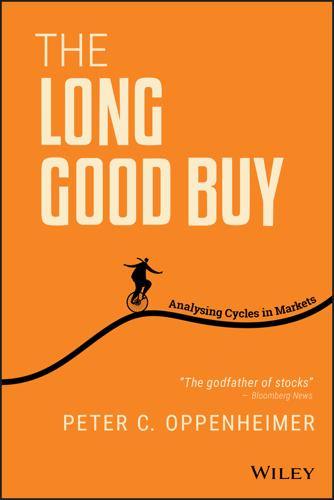
The Long Good Buy: Analysing Cycles in Markets
by
Peter Oppenheimer
Published 3 May 2020
S. (2015). Why is technology not boosting productivity? World Economic Forum [online]. Available at https://www.weforum.org/agenda/2015/06/why-is-technology-not-boosting-productivity 13 Hatzius, J., Phillips, A., Mericle, D., Hill, S., Struyven, D., Choi, D., Taylor, B., and Walker, R. (2019). Productivity paradox v2.0: The price of free goods. New York, NY: Goldman Sachs Global Investment Research. 14 Automobile history, History.com, 21 August 2018. 15 http://www.tvhistory.tv/1960–2000-TVManufacturers.htm 16 How to tame the tech titans. (2018). The Economist 18th June 2018, Leaders Section. 17 Hammond, R., Kostin, D.
…
New York, NY: Goldman Sachs Global Investment Research. Harley, N. F. R., and Harley, C. K. (1992). Output growth and the British Industrial Revolution: A restatement of the Crafts-Harley view. Economic History Review, 45(4), 703–730. Hatzius, J., Phillips, A., Mericle, D., Hill, S., Struyven, D., Choi, D., Taylor, B., and Walker, R. (2019). Productivity paradox v2.0: The price of free goods. New York, NY: Goldman Sachs Global Investment Research. Hayes, A. (2019, April 25). Dotcom bubble. Investopedia. How quantitative easing affects bond yields: Evidence from Switzerland. (2019). Royal Economic Society [online]. Available at https://www.res.org.uk/resources-page/how-quantitative-easing-affects-bond-yields-evidence-from-switzerland.html How to tame the tech titans. (2018).

Cogs and Monsters: What Economics Is, and What It Should Be
by
Diane Coyle
Published 11 Oct 2021
It is an example of what economists denote as a general purpose technology (Helpman 1998), which have the following features: They enable radical innovation in products and services and also in processes of production, initially in the innovating sector and gradually across a wider range of activities in the economy; They lead to a major re-organisation of the structure of the economy, because they change relative input costs dramatically; They require significant additional investment in other areas such as other forms of capital, infrastructure, organisation, skills, and so often start out very slowly, before eventually having dramatic economic and societal impacts. Printing, steam, and electricity are obvious examples. Paul David (1990) provided one well-known historical account of these characteristics of a GPT, comparing the spread of computer technology in the 1980s to the electric dynamo in the early twentieth century, by way of explaining the ‘productivity paradox’ Robert Solow (1987, 36) had complained about: ‘You can see the computer age everywhere but in the productivity statistics.’ While the ultimate impacts were therefore substantial, the impact took a long time to show through in GDP and productivity figures. Although some economists question whether digital technologies are in the same league as these past GPTs in terms of their broad impact (Gordon 2016; Bloom et al. 2020), my view is that digital will be as transformational as earlier GPTs: eventually talking of the digital economy will sound as strange as talking of the electricity economy.
…
Schweitzer, 2019, ‘Competition Policy for the Digital Era’, European Commission, https://ec.europa.eu/competition/publications/reports/kd0419345enn.pdf. Dasgupta, Partha, 2007, ‘Facts and Values in Modern Economics’, in H. Kincaid and D. Ross (eds.), Handbook on the Philosophy of Economic Sciences, Oxford: Oxford University Press. David, P. A., 1990, ‘The Dynamo and the Computer: An Historical Perspective on the Modern Productivity Paradox’, American Economic Review, 80 (2), 355–361. De Waal, F., 2006, Primates and Philosophers: How Morality Evolved, Princeton, NJ: Princeton University Press. Deaton, Angus, 2020, ‘Randomization in the Tropics Revisited: A Theme and Eleven Variations’, Working Paper No. 27600, National Bureau of Economic Research, Cambridge, MA.

Blockchain Revolution: How the Technology Behind Bitcoin Is Changing Money, Business, and the World
by
Don Tapscott
and
Alex Tapscott
Published 9 May 2016
8 Erik Voorhees, an early bitcoin pioneer and outspoken critic of the banking system, told us, “It is faster to mail an anvil to China than it is to send money through the banking system to China. That’s crazy! Money is already digital, it’s not like they’re shipping pallets of cash when you do a wire!”9 Why is it so inefficient? According to Paul David, the economist who coined the term productivity paradox, laying new technologies over existing infrastructure is “not unusual during historical transitions from one technological paradigm to the next.”10 For example, manufacturers needed forty years to embrace commercial electrification over steam power, and often the two worked side by side before manufacturers finally switched over for good.
…
Interview with Vikram Pandit, August 24, 2015. 4. www.nytimes.com/2015/07/12/business/mutfund/putting-the-public-back-in-public-finance.html. 5. www.worldbank.org/en/topic/poverty/overview. 6. http://hbswk.hbs.edu/item/6729.html. 7. Interview with Hernando de Soto, November 27, 2015. 8. http://corporate.westernunion.com/About_Us.html. 9. Interview with Erik Voorhees, June 16, 2015. 10. Paul A. David, “The Dynamo and the Computer: An Historical Perspective on the Modern Productivity Paradox,” Economic History of Technology 80(2) (May 1990): 355–61. 11. Joseph Stiglitz, “Lessons from the Global Financial Crisis,” revised version of a lecture presented at Seoul National University, October 27, 2009. 12. www.finextra.com/finextra-downloads/newsdocs/The%20Fintech%202%200%20Paper.pdf. 13. www.bloomberg.com/news/articles/2015-07-22/the-blockchain-revolution-gets-endorsement-in-wall-street-survey. 14. www.swift.com/assets/swift_com/documents/about_swift/SIF_201501.pdf. 15. https://lightning.network/. 16.
…
K., 110 Prediction markets, 84–85, 98, 220, 224–25 Pretty Good Privacy (PGP), 40 Privacy, 27–28, 41–45, 141 bAirbnb and, 116 Big Brother, 244, 274–75 breakthrough, 42–44 free speech and free press, 243–46 government and, 202, 204, 274–75 implications, 44–45 preserving right of, 48–49, 202 principle of, 41 problem to be solved, 41–42 Privacy and Big Data Institute, 27, 275 Private blockchains, 67–68 Procter & Gamble, 95 Productivity, 93, 108, 110, 155, 162 Productivity paradox, 57 Proof of activity, 32 Proof of asset, 38 Proof of burn, 315n Proof of capacity, 32 Proof of disk, 262 Proof of Existence (PoE), 46 Proof of property, 38 Proof of stake, 32, 40–41, 262 Proof of storage, 32–33 Proof of work (PoW), 31, 32, 35, 41, 46, 241, 259, 262 51 percent attack, 67, 266–67, 269 Property management, in IoTs, 159–60 Property records, 8, 19–20, 51, 188–89, 193–95, 198 Property rights, 19–20, 48–49, 188–90 Prosperity, 4, 17–23, 182–88.
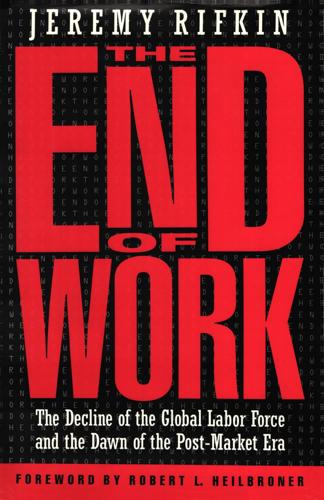
The End of Work
by
Jeremy Rifkin
Published 28 Dec 1994
By 1992 virtually every white collar worker in the country had access to $10,000 in information-processing hardware. 4 Despite the large investments, productivity continued to limp along, increasing at about 1 percent a year. Economists began talking about the "productivity paradox." Some, like Harvard's Gary Loveman, spoke openly about the utter failure of the highly touted technological revolution to whom so many had looked for their salvation. "We simply can't find evidence that there has been a substantial productivity increase-and in some cases any productivity increase-from the substantial growth in information technology," Loveman told his colleagues. 5 Just as corporate CEOs began to sour on the new information technologies, the productivity paradox suddenly disappeared. In 1991 output per hour increased by 2.3 percent.
…
The authors of the study, Erik Brynjolfsson and Lorin Hitt, found that between 1987 and 1991, return on investment (ROI) for computer capital averaged 54 percent in manufacturing and 68 percent for manufacturing and service combined. Brynjolfsson said that computers not only "added a great deal to productivity," but also contributed markedly to downsizing and the decline in the size of firms. 7 Morgan Stanley's Stephen Roach who, along with others on Wall Street, had raised the issue of a productivity paradox, dropped his earlier reservations, proclaiming that "The U.S. economy is now entering its first productivity-driven recovery since the 1960s, courtesy of efficiency gains being realized through the use of information technology." Much of the gain in productivity, says Roach, is coming in white collar areas and in the service industries. 8 It became increasingly apparent to Roach and everyone else concerned that the failure to achieve productivity gains faster lay not with the new laborsaving, timesaving information technologies, but rather with outmoded organizational structures that were not able to accommodate the new technologies.
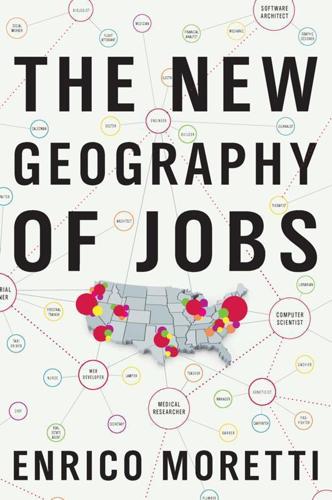
The New Geography of Jobs
by
Enrico Moretti
Published 21 May 2012
Overall, the effect of imports from low-wage countries has been highly uneven, with less skilled workers taking most of the job losses. At the same time, these imports cost less, and that saves consumers money. One of the paradoxes of globalization is that the very people who have been hit the hardest in terms of jobs have gained more as consumers. The Productivity Paradox Globalization is only part of the story of the decline of manufacturing jobs. For all its woes, the United States still produces many physical goods. We tend to forget this, because almost everything we pick up in the store says “Made in China.” While this is true of many consumer products, it is not true of many high-end nonconsumer goods, such as airplanes, industrial machines, and advanced medical devices.
…
See also “Big push” strategy; Cluster building; Great Divergence Powell, Walter, [>] “Power couples,” and thick labor market, [>]–[>] Productivity and dropout rates, [>] in innovation sector, [>], [>] and local investment subsidies, [>] in local services, [>] as location factor, [>] rise in (post-WWII), [>] from skilled colleagues, [>] and threat of Chinese competition, [>] in tradable vs. non-tradable sector, [>]–[>] of unskilled working with better-educated, [>] and wages, [>], [>] Productivity paradox, [>]–[>] Progent, [>] Programme for International Student Assessment (PISA), results of, [>]–[>] Programmers, and “offshoring,” [>] Prosper, [>]–[>] Protectionism, [>] Providence, Rhode Island, [>]–[>], [>], [>] Provo, Utah, [>], [>] Public transit, [>], [>] Quality of life and cluster building, [>]–[>] variation in, [>] See also Standard of living Q-Cells, [>] Racial integration, [>], [>] “Radical collaboration,” [>] Raleigh-Durham, North Carolina, [>], [>], [>], [>], [>], [>], [>] Ralph Lauren, [>] R&D (research and development), [>]–[>] global investment in, [>] green, [>], [>], [>] (see also Solar-panel industry) knowledge spillover from, [>] (see also Knowledge spillovers) in life sciences, [>]–[>], [>] (see also Life sciences research) for Microsoft, [>] and New York City, [>] and outsourcing, [>]–[>] in pharmaceutical sector, [>]–[>] scientific, [>] social return on, [>] subsidizing of, [>], [>] under-investment in (U.S.), [>], [>] vs. variable costs, [>] Real estate prices, [>]–[>], [>], [>] and gentrification, [>]–[>] and rationing of new housing, [>] and Seattle housing policy, [>]–[>] RealNetworks, [>] Recessions, [>]–[>].

Ten Lessons for a Post-Pandemic World
by
Fareed Zakaria
Published 5 Oct 2020
For the smaller countries of Barbados and the Bahamas, that number exceeds 30%: World Travel & Tourism Council, “Economic Impact Reports,” https://wttc.org/Research/Economic-Impact. 156 boosted their productivity by 33%: Jason Douglas, Jon Sindreu, and Georgi Kantchev, “The Problem with Innovation: The Biggest Companies Are Hogging All the Gains,” Wall Street Journal, July 15, 2018. 156 Other research shows this trend growing: Morgan Stanley Wealth Management, “The Capex Conundrum and Productivity Paradox,” Global Investment Committee, November 2017, https://advisor.morganstanley.com/sandra-smith-allison-butler/documents/home-office/investing/The-Capex-Conundrum-and-Productivity-Paradox.pdf. 157 Google’s global market share: J. Clement, “Global Market Share of Search Engines 2010–2020,” Statista, June 18, 2020, https://www.statista.com/statistics/216573/worldwide-market-share-of-search-engines/. 157 “competition is for losers”: Peter Thiel, “Competition Is for Losers,” Wall Street Journal, September 12, 2014. 157 totaling more than $1 trillion: JP Morgan Chase 2018 Annual Report, https://www.jpmorganchase.com/corporate/investor-relations/document/line-of-business-ceo-letters-to-shareholders-2018.pdf. 158 disproportionately to larger and better-connected companies: See an infographic from the Committee for a Responsible Budget, indicating that even though the CARES Act was trumpeted as a lifeline for Main Street, the act would roughly benefit large businesses and the airline industry as much as small businesses (http://www.crfb.org/blogs/visualization-cares-act).
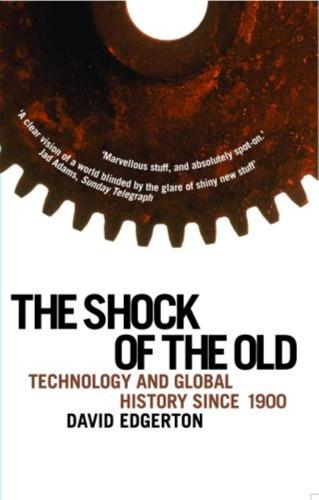
The Shock of the Old: Technology and Global History Since 1900
by
David Edgerton
Published 7 Dec 2006
Anthony Arundel and Barbara Mintzes, ‘The Benefits of Biopharmaceuticals’, Innogen Working Paper No. 14, Version 2.0 (University of Edinburgh, August 2004); Paul Nightingale and Paul Martin, ‘The Myth of the Biotech Revolution’, TRENDS in Biotechnology, Vol. 22, No. 11, November 2004, pp. 564–8. Conclusion 1. John B. Harms and Tim Knapp, ‘The New Economy: what’s new, what’s not’, Review of Radical Political Economics, Vol. 35 (2003), pp. 413–36. 2. P. A. David, ‘Computer and Dynamo: the Modern Productivity Paradox in a not-too-distant mirror’, in OECD, Technology and Productivity: the Challenge for Economic Policy (Paris: OECD, 1991). 3. Economist, 17 January 2004. 4. Observer, 8 April 2001. 5. Martin Stopford, Maritime Economics, second edition (London: Routledge, 1997), pp. 485–6. Select bibliography Books and articles Janet Abbate, Inventing the Internet (Cambridge, MA: MIT Press, 1999) Itty Abraham, The Making of the Indian Atomic Bomb: science, secrecy and the postcolonial state (London: Zed Books, 1998) Michael Adas, Machines as the Measure of Men: Science, Technology and Ideologies of Western Dominance (Ithaca: Cornell University Press, 1989) Michael Thad Allen, The Business of Genocide: The SS, Slave Labor and the Concentration Camps (Chapel Hill: University of North Carolina Press, 2002) David Arnold, ‘Europe, Technology and Colonialism in the 20th Century’, History and Technology, vol. 21 (2005) Jonathan Bailey, The First World War and the Birth of the Modern Style of Warfare (Camberley: Strategic and Combat Studies Institute, Occasional Paper No. 22, 1996) — Field Artillery and Firepower (Annapolis: Naval Institute Press, 2004) George Basalla, The Evolution of Technology (Cambridge: Cambridge University Press, 1988) Arnold Bauer, Goods, Power, History: Latin America’s Material Culture (Cambridge: Cambridge University Press, 2001) Z.
…
Brand, How Buildings Learn: What Happens after They’re Built (London: Penguin, 1994) Ernest Braun, Futile Progress: Technology’s Empty Promise (London: Earthscan, 1995) Michael Burawoy, The Politics of Production (London: Verso, 1985) Cynthia Cockburn and Susan Ormrod, Gender and Technology in the Making (London: Sage, 1993) Hera Cook, The Long Sexual Revolution: English Women, Sex, and Contraception 1800–1975 (Oxford: Oxford University Press, 2004) Caroline Cooper, Air-conditioning America: Engineers and the Contolled Environment, 1900–1960 (Baltimore: Johns Hopkins University Press, 1998) P. A. David, ‘Computer and Dynamo: the Modern Productivity Paradox in a not-too-distant mirror’, in OECD, Technology and Productivity: the Challenge for Economic Policy (Paris: OECD, 1991) — ‘Heroes, Herds and Hysteresis in Technological History: Thomas Edison and “The Battle of the Systems” Reconsidered’, Industrial and Corporate Change, Vol. 1, No. 1 (1992) Michael Dennis, ‘Accounting for Research: new histories of corporate laboratories and the social history of American science’, Social Studies of Science, Vol. 17 (1987) Development and Planning Unit, Understanding Slums: Case Studies for the Global Report on Human Settlements, Development and Planning Unit, UCL.

Street Smart: The Rise of Cities and the Fall of Cars
by
Samuel I. Schwartz
Published 17 Aug 2015
Akkerman makes a good case that an upright gait didn’t just help to free human hands to fabricate tools, but that human eyesight, situated at the highest available spot, made it possible to navigate via the fixed northern star, and to measure distance by number of steps taken. 98the viewpoint of a pedestrian, a cyclist, or a bus rider: (Gatersleben, 2013). 98the amount of visual information that they receive at fifteen miles per hour: (Dover, 2014). 99“Oxytocin surges when people are shown a sign of trust”: (Zak, 2012). 99more trust, empathy, and compassion in an entire community: (Mikolajczak, 2010). 99reduce threats, increase happiness: (Montgomery, 2014). 99On Appleyard’s “Heavy Street”: (Appleyard, 1981). 100as far afield as Bristol, England: (Hart, 2008). 101“because I can play there when ever I want”: (Appleyard, 2005). 104a little more than 55 cents per passenger mile: (NTSB Bureau of Traffic Statistics, 2014). 104the more mobility is constrained by tolls or congestion, the higher the GDP: (Litman, “The Mobility-Productivity Paradox,” 2014). 105places with a lot of congestion are economically vibrant: (Dumbaugh, 2014). 105a group of anthropologists and systems scientists: (Ortman, 2015). 106“average journey time is at a minimum”: (Wardrop, 1952). 110proximity is ten times more important than speed: (LeVine, 2012).
…
“A New Transit Safety Narrative.” Journal of Public Transportation 17, no. 4 (December 2014): 114–135. ———. Evaluating Household Chauffeuring Burdens: Understanding Direct and Indirect Costs of Transporting Non-Drivers. 2015 TRB Annual Meeting. Washington, DC: Transportation Research Board, 2014. ———. The Mobility-Productivity Paradox. I-TED/International Transportation Economic Development Conference. Victoria, BC: Victoria Transport Policy Institute, 2014, 1–18. Longhurst, James. “The Sidepath Not Taken: Bicycles, Taxes, and the Rhetoric of the Public Good in the 1890s.” Journal of Policy History 25, no. 4 (October 2013): 557–586.

The Rise and Fall of Nations: Forces of Change in the Post-Crisis World
by
Ruchir Sharma
Published 5 Jun 2016
EPWP1401, February 2014. 4 Ghada Fayad and Roberto Perrelli, “Growth Surprises and Synchronized Slowdowns in Emerging Markets: An Empirical Investigation,” International Monetary Fund, 2014. 5 Lant Pritchett and Lawrence Summers, “Asiaphoria Meets Regression to the Mean,” National Bureau of Economic Research, Working Paper no. 20573, October 2014. 6 “Goodhart’s Law,” BusinessDictionary.com. 7 James Surowiecki, The Wisdom of Crowds: Why the Many Are Smarter Than the Few and How Collective Wisdom Shapes Business, Economies, Societies, and Nations (New York: Doubleday, 2004). 8 Ned Davis, Ned’s Insights, November 14, 2014. 9 “Picking Apart the Productivity Paradox,” Goldman Sachs Research, October 5, 2015. Chapter 1: People Matter 1 Rick Gladstone, “India Will Be Most Populous Country Sooner Than Thought.” New York Times, July 29, 2015. 2 Charles S. Pearson, On the Cusp: From Population Boom to Bust (New York: Oxford University Press, 2015). 3 Tristin Hopper, “A History of the Baby Bonus: Tories Now Tout Benefits of Program They Once Axed,” National Post, July 13, 2015. 4 Richard F.
…
New York, Dececember 30, 1974. O’Neill, Jim. “Building Better Global Economic BRICs.” Goldman Sachs Global Economics Paper no. 66, November 30, 2001. Peters, Heiko, and Stefan Schneider. “Sluggish Global Trade—Cyclical or Structural?” Deutsche Bank Research, November 25, 2014. “Picking Apart the Productivity Paradox,” Goldman Sachs Research, October 5, 2015. Schofield, Mark. “Global Strategy and Macro Group Theme Book.” Citigroup Research, April 2015. Sharma, Ruchir. “Going In for the Big Kill.” Newsweek, October 2, 2006. ——. “Can India Still Be a Breakout Nation.” Economic Times, December 10, 2012. ——.
…
“The End of Plenty Review.” New York Times, July 24, 2015. Pathiparampil, Bino. “India-Pharma: US Market Remains a Great Opportunity.” IIFL Institutional Equities, 2013. Pearson, Charles. On the Cusp: From Population Boom to Bust. New York: Oxford University Press, 2015. “Picking Apart the Productivity Paradox.” Goldman Sachs, Global Macro Research, October 5, 2015). “PISA Scores: Why Would You Invest in Greece Instead of Poland?” Renaissance Capital, December 4, 2013. Redenius, Jeremy. “The Challenges to Feeding the World May Not Be So Challenging After All.” Bernstein Research, December 6, 2013.

Stakeholder Capitalism: A Global Economy That Works for Progress, People and Planet
by
Klaus Schwab
Published 7 Jan 2021
uri=CELEX:32007D0053. 48 “Big Business Is Overcharging You $5,000 a Year,” David Leonhardt, The New York Times, November 2019, https://www.nytimes.com/2019/11/10/opinion/big-business-consumer-prices.html. 49 Ibidem. 50 “The 7 Biggest Fines the EU Have Ever Imposed against Giant Companies,” Ana Zarzalejos, Business Insider, July 2018, https://www.businessinsider.com/the-7-biggest-fines-the-eu-has-ever-imposed-against-giant-corporations-2018-7. 51 Antitrust: Commission fines Google €1.49 billion for abusive practices in online advertising, European Commission, March 2019, https://ec.europa.eu/commission/presscorner/detail/en/IP_19_1770. 52 Antitrust: Commission fines truck producers € 2.93 billion for participating in a cartel, European Commission, July 2016, https://ec.europa.eu/commission/presscorner/detail/es/IP_16_2582. 53 Cartel Statistics, European Commission, Period 2015–2019, https://ec.europa.eu/competition/cartels/statistics/statistics.pdf. 54 Merger Statistics, European Commission, https://ec.europa.eu/competition/mergers/statistics.pdf. 55 “Vestager Warns Big Tech She Will Move beyond Competition Fines,” Javier Espinoza, Financial Times, October 2019, https://www.ft.com/content/dd3df1e8-e9ee-11e9-85f4-d00e5018f061. 56 https://www.nytimes.com/2019/11/10/opinion/big-business-consumer-prices.html. 57 “The Alstom-Siemens Merger and the Need for European Champions,” Konstantinos Efstathiou, Bruegel Institute, March 2019, https://www.bruegel.org/2019/03/the-alstom-siemens-merger-and-the-need-for-european-champions/. 58 The Fourth Industrial Revolution, Klaus Schwab, January 2016. 59 “Unpacking the AI-Productivity Paradox,” Eric Brynjolfsson, Daniel Rock and Chad Syverson, MIT Sloan Management Review, January 2018, https://sloanreview.mit.edu/article/unpacking-the-ai-productivity-paradox/. 60 Centre for the Fourth Industrial Revolution, World Economic Forum, https://www.weforum.org/centre-for-the-fourth-industrial-revolution. 61 Interview with Tim Wu by Peter Vanham, New York, October 2019. 62 The Value of Everything, Mariana Mazzucato, Penguin, April 2019, https://www.penguin.co.uk/books/280466/the-value-of-everything/9780141980768.html. 63 “One of the World's Most Influential Economists Is on a Mission to Save Capitalism from Itself,” Eshe Nelson, Quartz, July 2019, https://qz.com/1669346/mariana-mazzucatos-plan-to-use-governments-to-save-capitalism-from-itself/. 7 People and the Planet At places like Davos, people like to tell success stories.

Stakeholder Capitalism: A Global Economy That Works for Progress, People and Planet
by
Klaus Schwab
and
Peter Vanham
Published 27 Jan 2021
uri=CELEX:32007D0053. 48 “Big Business Is Overcharging You $5,000 a Year,” David Leonhardt, The New York Times, November 2019, https://www.nytimes.com/2019/11/10/opinion/big-business-consumer-prices.html. 49 Ibidem. 50 “The 7 Biggest Fines the EU Have Ever Imposed against Giant Companies,” Ana Zarzalejos, Business Insider, July 2018, https://www.businessinsider.com/the-7-biggest-fines-the-eu-has-ever-imposed-against-giant-corporations-2018-7. 51 Antitrust: Commission fines Google €1.49 billion for abusive practices in online advertising, European Commission, March 2019, https://ec.europa.eu/commission/presscorner/detail/en/IP_19_1770. 52 Antitrust: Commission fines truck producers € 2.93 billion for participating in a cartel, European Commission, July 2016, https://ec.europa.eu/commission/presscorner/detail/es/IP_16_2582. 53 Cartel Statistics, European Commission, Period 2015–2019, https://ec.europa.eu/competition/cartels/statistics/statistics.pdf. 54 Merger Statistics, European Commission, https://ec.europa.eu/competition/mergers/statistics.pdf. 55 “Vestager Warns Big Tech She Will Move beyond Competition Fines,” Javier Espinoza, Financial Times, October 2019, https://www.ft.com/content/dd3df1e8-e9ee-11e9-85f4-d00e5018f061. 56 https://www.nytimes.com/2019/11/10/opinion/big-business-consumer-prices.html. 57 “The Alstom-Siemens Merger and the Need for European Champions,” Konstantinos Efstathiou, Bruegel Institute, March 2019, https://www.bruegel.org/2019/03/the-alstom-siemens-merger-and-the-need-for-european-champions/. 58 The Fourth Industrial Revolution, Klaus Schwab, January 2016. 59 “Unpacking the AI-Productivity Paradox,” Eric Brynjolfsson, Daniel Rock and Chad Syverson, MIT Sloan Management Review, January 2018, https://sloanreview.mit.edu/article/unpacking-the-ai-productivity-paradox/. 60 Centre for the Fourth Industrial Revolution, World Economic Forum, https://www.weforum.org/centre-for-the-fourth-industrial-revolution. 61 Interview with Tim Wu by Peter Vanham, New York, October 2019. 62 The Value of Everything, Mariana Mazzucato, Penguin, April 2019, https://www.penguin.co.uk/books/280466/the-value-of-everything/9780141980768.html. 63 “One of the World's Most Influential Economists Is on a Mission to Save Capitalism from Itself,” Eshe Nelson, Quartz, July 2019, https://qz.com/1669346/mariana-mazzucatos-plan-to-use-governments-to-save-capitalism-from-itself/. 7 People and the Planet At places like Davos, people like to tell success stories.
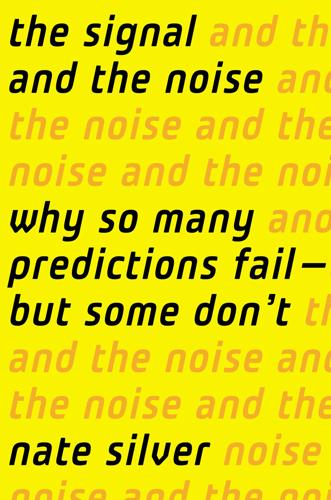
The Signal and the Noise: Why So Many Predictions Fail-But Some Don't
by
Nate Silver
Published 31 Aug 2012
Economic growth began to zoom upward much faster than the growth rate of the population, as it has continued to do through to the present day, the occasional global financial meltdown notwithstanding.27 FIGURE I-2: GLOBAL PER CAPITA GDP, 1000–2010 The explosion of information produced by the printing press had done us a world of good, it turned out. It had just taken 330 years—and millions dead in battlefields around Europe—for those advantages to take hold. The Productivity Paradox We face danger whenever information growth outpaces our understanding of how to process it. The last forty years of human history imply that it can still take a long time to translate information into useful knowledge, and that if we are not careful, we may take a step back in the meantime.
…
In 1971, for instance, it was claimed that we would be able to predict earthquakes within a decade,29 a problem that we are no closer to solving forty years later. Instead, the computer boom of the 1970s and 1980s produced a temporary decline in economic and scientific productivity. Economists termed this the productivity paradox. “You can see the computer age everywhere but in the productivity statistics,” wrote the economist Robert Solow in 1987.30 The United States experienced four distinct recessions between 1969 and 1982.31 The late 1980s were a stronger period for our economy, but less so for countries elsewhere in the world.
…
David, 206 Mathis, Catherine, 25, 462 matrices, in weather forecasting, 114–18 Mauna Loa Observatory, 375, 401 Maunder Minimum, 392 Mayfield, Max, 109, 110, 138–41 measles, 214, 223–24, 225 Mechanical Turk, 262–64, 263, 265, 281, 282 media bias, 60 medical diagnoses, 448 meditation, 328 Medvedev, Dmitri, 48 Memphis, Tenn., 396 Mercury, 374 Merrill Lynch, 353 metacognition, 273 methane, 374, 375 Met Office (UK), 394, 408 Mexico, 210, 215–16 Mexico City, 144 middle class, 189 Middle East, 398 Midway Islands, 413 Milledge, Lastings, 89 Millikan, Arikia, 334 mind blindness, 419 minor league system, 92–93 Mississippi, 109, 123–24 MIT, 384 MMR shots, 224 modeling for insights, 229 models: agent-based, 226, 227–29, 230 bugs in, 285–86 of CDO defaults, 13, 22, 26, 27, 29, 42, 45 for chess, 267 of climate system, 371, 380, 384–85, 401–6, 402 crudeness of, 7 of elections, 15 foxlike approach of, 68 FRED, 226 fundamentals-based, 68 language as, 230 naïve trust in, 11 overfitting in, 163–71, 166, 168–71, 185, 191, 452n, 478 for predicting earthquakes, 158–61, 167 regression, 100 signal vs. noise in, 388–89 SIR, 220–21, 221, 223, 225, 389 thought experiments as, 488 use and abuse of, 230 as useful even in failure, 230–31 for weather forecasting, 114–18, 119, 120, 121, 122, 123–25, 225, 226, 388 Model T, 212 Mojave Desert, 159–60 Molina, Yadier, 101 moment magnitude scale, 142n momentum trading, 344–45, 345, 368 Moneyball (Lewis), 9, 10, 77, 86, 87, 92, 93–94, 95, 99, 101, 105, 107, 314, 446 Moneymaker, Chris, 294–95, 296, 327 Mongols, 145n Monroe Doctrine, 419 Moody’s, 19, 24–25, 43, 44, 45, 463 Morgan, Joe, 102 Morris, Dick, 55, 56, 61 mortgage-backed securities, 462 home sales vs., 34–35, 35, 39, 42, 43 nonlinearity of, 119 ratings of, 19, 20, 24, 68 shorting of, 355 mortgages, 24 defaults on, 27–29, 184 subprime, 27, 33, 464 Mount Pinatubo, 392, 399–400 Moussaoui, Zacarias, 422, 444 MRSA, 227, 228 MSM, 222, 222, 487 MSNBC, 51n Müller-Lyer illusion, 366, 367 multiplier effect, 42 mumps, 224 Murphy, Allan, 129 Murphy, Donald, 89 mutual funds, 339–40, 340, 356, 363–64, 498 Nadal, Rafael, 331, 357-58, 496 Naehring, Tim, 77 Nagasaki, Japan, 432 Nagin, Ray, 110, 140–41 Napoleon I, Emperor of France, 262 NASA, 174–75, 370, 379, 393–95 NASDAQ, 346, 346, 348, 365 Nash, John, 419 National Academy of Sciences, 384 National Basketball Association (NBA), 92, 234–40, 255n National Center for Atmospheric Research (NCAR), 110, 111, 118 National Collegiate Athletic Association (NCAA), 451n national debt, 189, 509 National Economic Council, 37 National Football League (NFL), 92, 185–86, 336, 480 National Hurricane Center, 108, 109–10, 126, 138–41 National Institute of Nuclear Physics, 143 National Journal, 57–58 National League, 79 National Oceanic and Atmospheric Administration (NOAA), 122, 393–95 National Park Service, 267 National Science Foundation, 473 National Weather Service (NWS), 21, 122–23, 125, 126, 127–28, 131, 135, 139, 178–79, 393–94 NATO, 428–29, 429, 430–31, 431, 437, 438, 439 Nature, 13, 254, 409 Nauru, 372 nearest neighbor analysis, 85 negative feedback, 38, 39 neighborhoods, 224–25, 226–27, 230 Netherlands, 31, 210 New Jersey, 391 New Madrid Fault, 154 New Orleans, La., 108–9, 138, 139–40, 387, 388 Newsweek, 399 Newton, Isaac, 112, 114, 118, 241, 249, 448 New York, N.Y., 219n, 391, 391, 396, 432, 474, 514 New Yorker, 103 New York Knicks, 119 New York Stock Exchange, 329, 363, 370 New York Times, 146, 205–6, 276, 281, 356, 433, 484 New York Yankees, 74 New Zealand, 210 9/11 Commission, 444, 445 9/11 Commission Report, 423 Ninety-Five Theses (Luther), 4 Ningirsu, 112 nitrous oxide, 375 Nixon, Richard, 400 No Free Lunch, 361–62 noise, 63, 250 in batting averages, 339 in climatology, 371–73 definitions of, 416 in financial markets, 362–64 increase in, 13 in predictive models, 388–89 signals vs., 8, 13, 17, 60, 81, 133, 145, 154, 162, 163, 173, 185, 196, 285–86, 295, 327, 340, 371–73, 388–89, 390–91, 404, 448, 451, 453 in stock market, 368 “Noise” (Black), 362 no-limit hold ’em, 300–308, 309–11, 315–16, 316, 318, 324n, 495 nonlinear systems, 29, 118–19, 120, 376–77 Nordhaus, William, 398 North American Aerospace Defense Command (NORAD), 423 Norway, 31 NRSROs, see ratings agencies Nuclear Cities Initiative, 512 nuclear weapons, 434, 436, 438 see also weapons of mass destruction null hypothesis, 260 see also statistical significance test Nunn, Sam, 434 Oakland Athletics, 87, 92, 99–100, 106, 471 Obama, Barack, 40, 49, 55, 59, 252, 358, 379, 444, 468, 473 obesity, 372, 373 objective truth, 14 objectivity, 14, 64, 72–73, 100, 252, 253, 255, 258-59, 288, 313, 403, 453 observer effect, 188, 472 Occam’s razor, 389 Odean, Terrance, 359 Oklahoma City bombing, 425, 427 Okun’s law, 189 Omaha, Nebr., 396 O’Meara, Christopher, 36 Omori’s Law, 477 On-base percentage (OBP), 95, 106, 314, 471 O’Neal, Shaquille, 233–34, 235, 236, 237 options traders, 364 order, complexity and, 173 outliers, 65, 425–28, 452 out of sample, 43–44, 420 Overcoming Bias (blog), 201 overconfidence, 179–83, 191, 203, 323–24, 386, 443, 454 in stock market trading, 359–60, 367 overeating, 503 overfitting, 163–68, 166, 191, 452n, 478 earthquake predictions and, 168–71, 185 over-under line, 239–40, 257, 286 ozone, 374 Ozonoff, Alex, 218–19, 223, 231, 483 Pacific countries, 379 Pacific Ocean, 419 Pacific Poker, 296–97 Page, Clarence, 48, 467 PageRank, 291 Pakistan, 434–35 Palin, Sarah, 59 Palm, 361, 362 panics, financial, 38, 195 Papua New Guinea, 228 Pareto principle, 312–13, 314, 315, 316n, 317, 496 Paris, 2 Parkfield, Calif., 158–59, 174 partisanship, 13, 56, 57, 58, 60, 64, 92, 130, 200, 378, 411, 452 Party Poker, 296, 319 patents, 7–8, 8, 411, 411n, 460, 514 pattern detection, 12, 281, 292 Pearl Harbor, 10, 412–13, 414, 415–17, 419–20, 423, 426, 444, 510 Pearl Harbor: Warning and Decisions (Wohlstetter), 415, 416, 418, 419–20 PECOTA, 9, 74–75, 78, 83, 84, 85–86 scouts vs., 88–90, 90, 91, 102, 105, 106–7 Pecota, Bill, 88 Pedroia, Dustin, 74–77, 85, 89, 97, 101–5 penicillin, 119 pensions, 24, 27, 34, 356, 463 P/E (price-to-earnings) ratio, 348, 349, 350–51, 354, 365, 369, 500 Perry, Rick, 59, 217 persistence, 131, 132, 132 personal income, 481 Peru, 210 Petit, Yusemiro, 89 Petty, William, 212 pharmaceuticals, 411 Philadelphia Phillies, 286 Pielke, Roger, Jr., 177n pigs, 209 Pippen, Scottie, 235, 236 pitchers, 88, 90, 92 Pitch f/x, 100–101, 106–7 Pittsburgh, Pa., 207–8, 228, 230 Pittsburgh, University of, 225–26 plate discipline, 96 Plato, 2 pneumonia, 205 Poe, Edgar Allan, 262–64, 282, 289 Poggio, Tomaso, 12, 231 point spread, 239 poker, 10, 16, 59–60, 63, 66, 256, 284, 294–328, 343, 362, 494–95 Bayesian reasoning in, 299, 301, 304, 306, 307, 322–23 boom in, 294, 296, 314–15, 319, 323 competition in, 313 computer’s playing of, 324 fish in, 312, 316, 317–19 inexperience of mid-2000s players in, 315 limit hold ’em, 311, 322, 322 luck vs. skill in, 321–23 no-limit hold ’em, 300–308, 309–11, 315–16, 316, 318, 324n, 495 online, 296–97, 310 plausible win rates in, 323 predictions in, 297–99, 311–15 random play in, 310 results in, 327 river in, 306, 307, 494 signal and noise in, 295 suckers in, 56, 237, 240, 317–18, 320 Texas hold ’em, 298–302 volatility of, 320, 322, 328 PokerKingBlog.com, 318 PokerStars, 296, 320 Poland, 52 Polgar, Susan, 281 polio vaccine, 206 political partisanship, see partisanship political polls, see polls politics, political science, 11, 14–15, 16, 53, 426 failures of predictions on, 11, 14–15, 47–50, 49, 53, 55–59, 64, 67–68, 157, 162, 183, 249, 314 small amount of data in, 80 polls, 61–63, 62, 68, 70, 426 biases in, 252–53 frequentist approach to, 252 individual vs. consensus, 335 margin of error in, 62, 65, 176, 252, 452 outlier, 65 prediction interval in, 183n Popper, Karl, 14, 15 Population Bomb, The (Ehrlich and Ehrlich), 212–13 pork, 210 Portland Trail Blazers, 234, 235–37, 489 positive feedback, 38, 39, 368 posterior possibility, 244 power-law distribution, 368n, 427, 429–31, 432, 437, 438, 441, 442 precision, accuracy vs., 46, 46, 225 predestination, 112 Predicting the Unpredictable: The Tumultuous Science of Earthquake Prediction (Hough), 157 prediction, 1, 16 computers and, 292 consensus, 66–67, 331–32, 335–36 definition of, 452n Enlightenment debates about, 112 in era of big data, 9, 10, 197, 250 fatalism and, 5 feedback on, 183 forecasting vs., 5, 149 by foxes, see foxes of future returns of stocks, 330–31, 332–33 of global warming, 373–76, 393, 397–99, 401–6, 402, 507 in Google searches, 290–91 by hedgehogs, see hedgehogs human ingenuity and, 292 of Hurricane Katrina, 108–10, 140–41, 388 as hypothesis-testing, 266–67 by IPCC, 373–76, 389, 393, 397–99, 397, 399, 401, 507 in Julius Caesar, 5 lack of demand for accuracy in, 202, 203 long-term progress vs. short-term regress and, 8, 12 Pareto principle of, 312–13, 314 perception and, 453–54, 453 in poker, 297–99, 311–15 probability and, 243 quantifying uncertainty of, 73 results-oriented thinking and, 326–28 scientific progress and, 243 self-canceling, 219–20, 228 self-fulfilling, 216–19, 353 as solutions to problems, 14–16 as thought experiments, 488 as type of information-processing, 266 of weather, see weather forecasting prediction, failures of: in baseball, 75, 101–5 of CDO defaults, 20–21, 22 context ignored in, 43 of earthquakes, 7, 11, 143, 147–49, 158–61, 168–71, 174, 249, 346, 389 in economics, 11, 14, 40–42, 41, 45, 53, 162, 179–84, 182, 198, 200–201, 249, 388, 477, 479 financial crisis as, 11, 16, 20, 30–36, 39–42 of floods, 177–79 of flu, 209–31 of global cooling, 399–400 housing bubble as, 22–23, 24, 25–26, 28–29, 32–33, 42, 45 overconfidence and, 179–83, 191, 203, 368, 443 overfitting and, 185 on politics, 11, 14–15, 47–50, 49, 53, 55–59, 64, 67–68, 157, 162, 183, 249, 314 as rational, 197–99, 200 recessions, 11 September 11, 11 in stock market, 337–38, 342, 343–46, 359, 364–66 suicide bombings and, 424 by television pundits, 11, 47–50, 49, 55 Tetlock’s study of, 11, 51, 52–53, 56–57, 64, 157, 183, 443, 452 of weather, 21–22, 114–18 prediction interval, 181-183, 193 see also margin of error prediction markets, 201–3, 332–33 press, free, 5–6 Price, Richard, 241–42, 490 price discovery, 497 Price Is Right, 362 Principles of Forecasting (Armstrong), 380 printing press, 1–4, 6, 13, 17, 250, 447 prior probability, 244, 245, 246, 252, 255, 258–59, 260, 403, 406–7, 433n, 444, 451, 490, 497 probability, 15, 61–64, 63, 180, 180, 181 calibration and, 134–36, 135, 136, 474 conditional, 240, 300; see also Bayes’s theorem frequentism, 252 and orbit of planets, 243 in poker, 289, 291, 297, 302–4, 302, 306, 307, 322–23 posterior, 244 predictions and, 243 prior, 244, 245, 246, 252, 255, 258–59, 260, 403, 406–7, 433n, 444, 451, 490, 498 rationality and, 242 as waypoint between ignorance and knowledge, 243 weather forecasts and, 195 probability distribution, of GDP growth, 201 probability theory, 113n productivity paradox, 7–8 “Programming a Computer for Playing Chess” (Shannon), 265–66 progress, forecasting and, 1, 4, 5, 7, 112, 243, 406, 410–11, 447 prospect theory, 64 Protestant Reformation, 4 Protestant work ethic, 5 Protestants, worldliness of, 5 psychology, 183 Public Opinion Quarterly, 334 PURPLE, 413 qualitative information, 100 quantitative information, 72–73, 100 Quantum Fund, 356 quantum mechanics, 113–14 Quebec, 52 R0 (basic reproduction number), 214–15, 215, 224, 225, 486 radar, 413 radon, 143, 145 rain, 134–37, 473, 474 RAND database, 511 random walks, 341 Rapoport, David C., 428 Rasskin-Gutman, Diego, 269 ratings agencies, 463 CDOs misrated by, 20–21, 21, 22, 26–30, 36, 42, 43, 45 housing bubble missed by, 22–23, 24, 25–26, 28–29, 42, 45, 327 models of, 13, 22, 26, 27, 29, 42, 45, 68 profits of, 24–25 see also specific agencies rationality, 183–84 biases as, 197–99, 200 of markets, 356–57 as probabilistic, 242 Reagan, Ronald, 50, 68, 160, 433, 466 RealClimate.org, 390, 409 real disposable income per capita, 67 recessions, 42 double dip, 196 failed predictions of, 177, 187, 194 in Great Moderation, 190 inflation-driven, 191 of 1990, 187, 191 since World War II, 185 of 2000-1, 187, 191 of 2007-9, see Great Recession rec.sport.baseball, 78 Red Cross, 158 Red River of the North, 177–79 regression analysis, 100, 401, 402, 498, 508 regulation, 13, 369 Reinhart, Carmen, 39–40, 43 religion, 13 Industrial Revolution and, 6 religious extremism, 428 religious wars of sixteenth and seventeenth centuries, 2, 6 Remote Sensing Systems, 394 Reno, Nev., 156–57, 157, 477 reserve clause, 471 resolution, as measure of forecasts, 474 results-oriented thinking, 326–28 revising predictions, see Bayesian reasoning Ricciardi, J.

The Fourth Industrial Revolution
by
Klaus Schwab
Published 11 Jan 2016
Productivity Over the past decade, productivity around the world (whether measured as labour productivity or total-factor productivity (TFP)) has remained sluggish, despite the exponential growth in technological progress and investments in innovation.17 This most recent incarnation of the productivity paradox – the perceived failure of technological innovation to result in higher levels of productivity – is one of today’s great economic enigmas that predates the onset of the Great Recession, and for which there is no satisfactory explanation. Consider the US, where labour productivity grew on average 2.8 percent between 1947 and 1983, and 2.6 percent between 2000 and 2007, compared with 1.3 percent between 2007 and 2014.18 Much of this drop is due to lower levels of TFP, the measure most commonly associated with the contribution to efficiency stemming from technology and innovation.
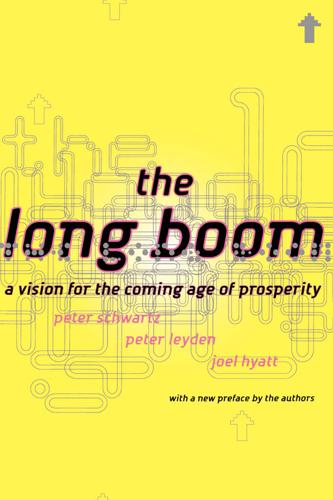
The Long Boom: A Vision for the Coming Age of Prosperity
by
Peter Schwartz
,
Peter Leyden
and
Joel Hyatt
Published 18 Oct 2000
Ike PRoducriviiy P/wdox Taken together, these two major innovations in the nature of global capitalism—in finance and organization—began to boost the productivity of the economy at large. But this did not happen right away, nor was it obvious. In fact, there's still quite a bit of controversy surrounding what is called the productivity paradox. Basically, the investment in new technologies typically translates into higher productivity for the workers who use them. That's why businesses invest in them in the first place. However, by the late 1990s, although businesses had invested an estimated $4 trillion in information technologies, the standard government productivity measurements showed only a slight rise, and that had come only since about 1996.
…
Right, 73-75 libertarianism, 74-75 moderation of middle class, 231-232 New American Ideology, 74-76 overview, 7-10, 63-64 parties of the people, 94 rale of twos in, 111-114 U.S. economic leadership, 7, 57, 68-71, 294 world leadership, 52 Pollution, 6, 10, 154-155 See also Environment Polymers, 192 Pons, Stanley, 219 Populations, 118-119,154-156 Post-World War II era economic boom, 15, 49-50, 56 Japan, 14, 69-70,119-123, 229 making of the middle class, 229 U.S. and global thinking, 69-71 Private schools, 87 Privatization, 41, 92, 95 Proceedings of the National Academy of Sciences, 205 Productivity paradox, 46-48 Progress, 13-15 Project Guttenberg, 89 Project Phoenix, 221 Prosperity, 11, 56, 285 See also Economic growth Protectionism, 259, 261, 292 Ptolemy, 212 Publishing, 58-59 Puerto Rico, 221 Rain forests, 142 RCCola, 112 Reagan, President Ronald, 16, 39, 40, 41, 48, 73, 86, 92, 273 Refining oil, 192 Regulatory restructuring, 50-51, 61-62, 292 Reorganizing business, 42-45 Republicans, 77, 79 Riemannian geometry, 213 Right vs.

The Innovation Illusion: How So Little Is Created by So Many Working So Hard
by
Fredrik Erixon
and
Bjorn Weigel
Published 3 Oct 2016
In the private sector, start-up employment went from 4 to 2 percent. 25.Buchanan, “American Entrepreneurship Is Actually Vanishing.” 26.Simon and Barr, “Endangered Species.” 27.Litan, “Start-up Slowdown.” 28.OECD, “The Future of Productivity.” 29.OECD, “No Country for Young Firms?” 30.Decker et al., “Where Has All the Skewness Gone?” 31.Gordon, “The Demise of US Economic Growth,” figs 9 and 10. 32.Haltiwanger, Hathaway, and Miranda, “Declining Business Dynamism in the US High-Technology Sector,” 9. 33.Hatzius and Dawsey, “Doing the Sums on Productivity Paradox v2.0.” 34.Fernald and Wang, “Why Has the Cyclicality of Productivity Changed?” 35.Brynjolfsson and McAfee, The Second Machine Age, 105. 36.Brynjolfsson and McAfee, The Second Machine Age, 105. 37.Fernald, “Productivity and Potential Output.” 38.Fernald and Wang, “The Recent Rise and Fall of Rapid Productivity Growth.” 39.Frey and Osborne, “Technology at Work,” 62. 40.Summers, “Making Sense of the Productivity Slowdown,” 5. 41.Cardarelli and Lusinyan, “US Total Factor Productivity Slowdown.” 42.Syversen, “Challenges to Mismeasurement Explanations.” 43.Syversen, “Challenges to Mismeasurement Explanations.” 44.Copeland, “Seasonality, Consumer Heterogeneity and Price Indexes.” 45.The data reference is from the US Bureau of Economic Analysis’s chained price index for IT software. 46.Nakamura and Soloveichik.
…
NBER Working Paper 4780. National Bureau of Economic Research, June 1994. At http://www.nber.org/papers/w4780. Hathaway, Ian, and Robert Litan, “The Other Aging of America: The Increasing Dominance of Older Firms.” Economic Studies at Brookings, July 2014. Hatzius, Jan, and Kris Dawsey, “Doing the Sums on Productivity Paradox v2.0.” U.S. Economics Analyst, No. 15/30. Goldman Sachs, 2015. Hayek, Friedrich A., “The Pretence of Knowledge.” Nobel Prize Lecture, Dec. 11, 1974. At http://www.nobelprize.org/nobel_prizes/economic-sciences/laureates/1974/hayek-lecture.html. Hayek, Friedrich A., “The Use of Knowledge in Society.”

Why Things Bite Back: Technology and the Revenge of Unintended Consequences
by
Edward Tenner
Published 1 Sep 1997
Nor do people invariably use the safest systems, or use them with sufficient vigilance. But considering our dependence on electronic hardware, the important thing is not that it fails but that off-the-shelf hardware has become more and more stable. We can rule out system failures as a big component of the productivity paradox. The problem is really in the software—and its use and misuse. Computers tend to replace one category of worker with another. There are two ways to get something done. You can find one group trained to accomplish things the old-fashioned way. Or you can pay another group to set up and maintain machines and systems that will do the same work with fewer employees—of the older category of worker.
…
Its successor OS/2 Warp 3 needs 65 megabytes. Microsoft Windows 3.1 plus MS-DOS needed 20 megabytes; Windows 95 requires 6o. Rarer, more powerful systems like elegant NextStep 3.2 demand 12o. The inflation of code, also reflected in 25megabyte application programs, illustrates a chronic problem of computing that contributes to the productivity paradox: as swiftly as resources grow, the demands of software tend to expand even faster. Programmers and developers are understandably working for the future, preparing for the next generation of machines. Most users are living in the past because either their budgets or their bosses won't let them upgrade hardware to the current standard.
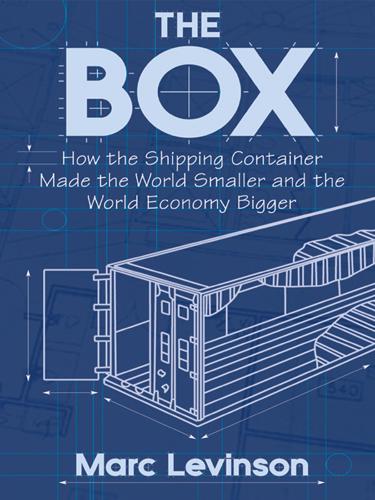
The Box: How the Shipping Container Made the World Smaller and the World Economy Bigger
by
Marc Levinson
Published 1 Jan 2006
Electricity was first used in manufacturing in 1883; for discussion of its relatively slow acceptance in manufacturing, see Warren D. Devine, Jr., “From Shafts to Wires: Historical Perspective on Electrification,” Journal of Economic History 43 (1983): 347–372. Examples of the debate over computers include Paul A. David, “The Dynamo and the Computer: An Historical Perspective on the Modern Productivity Paradox,” American Economic Review 80 (1990): 355–361; Stephen D. Oliner and Daniel E. Sichel, “The Resurgence of Growth in the Late 1990s: Is Information Technology the Story?” Journal of Economic Perspectives 14, no. 4 (2000): 3–22; and Dale W. Jorgenson and Kevin J. Stiroh, “Information Technology and Growth,” American Economic Review 89, no. 2 (1999): 109–115. 13.
…
“Social Repercussions of New Cargo Handling Methods in the Port of London.” International Labour Review 105 (1972): 543–568. Cushing, Charles R. “The Development of Cargo Ships in the United States and Canada in the Last Fifty Years.” Manuscript, January 8, 1992. David, Paul A. “The Dynamo and the Computer: An Historical Perspective on the Modern Productivity Paradox.” American Economic Review 80 (1990): 355–361. Davies, J. E. “An Analysis of Cost and Supply Conditions in the Liner Shipping Industry.” Journal of Industrial Economics 31 (1983): 417–436. Dempsey, Paul Stephen. “The Law of Intermodal Transportation: What It Was, What It Is, What It Should Be.”

From Counterculture to Cyberculture: Stewart Brand, the Whole Earth Network, and the Rise of Digital Utopianism
by
Fred Turner
Published 31 Aug 2006
Perkins and Perkins, Internet Bubble, 13; Brenner, Boom and the Bubble, 2. 15. The relationship between information technology and productivity has been in dispute for some time. For a review and analysis of the literature on this issue in the late 1980s and early 1990s, see Brynjolfsson, “Productivity Paradox of Information Technology”; Gordon, “Does the ‘New Economy’ Measure Up?” 50, 57. 16. Shiller, Irrational Exuberance, 20 –21, quoted in Thrift, “Romance Not the Finance Makes Business Worth Pursuing,” 426; Alan Greenspan, “The American Economy in a World Context,” at the 35th Annual Conference on Bank Structure and Competition, Federal Reserve Bank of Chicago, May 6, 1999, available at http://www.federalreserve.gov/ board-docs/speeches/1999/19990506.htm, quoted in Gordon, “Does the ‘New Economy’ Measure Up?”
…
Boston: Harvard Business School Press, 2000. Bryant, John, William Aspray, Andrew Goldstein, and Frederik Nebeker. Rad Lab: Oral Histories Documenting World War II Activities at the MIT Radiation Laboratory. Piscataway, NJ: IEEE Center for the History of Electrical Engineering, 1993. Brynjolfsson, Erik. “The Productivity Paradox of Information Technology.” Communications of the ACM 36, no. 12 (1993): 67–77. Buderi, Robert. The Invention That Changed the World: How a Small Group of Radar Pioneers Won the Second World War and Launched a Technological Revolution. New York: Simon and Schuster, 1996. [ 296 ] B i b l i o g ra p h y Burner, David.

Capitalism in America: A History
by
Adrian Wooldridge
and
Alan Greenspan
Published 15 Oct 2018
Ann Norton Greene, Horses at Work: Harnessing Power in Industrial America (Cambridge, MA: Harvard University Press, 2008), 1–2. 12. Ibid., 41. 13. Paul David, “Computer and Dynamo: The Modern Productivity Paradox in a Not-Too-Distant Mirror,” Center for Economic Policy Research, No. 339, Stanford University, July 1989. See also “The Dynamo and the Computer: A Historical Perspective on the Modern Productivity Paradox,” American Economic Review 80, no. 2 (May 1990), Papers and Proceedings of the Hundred and Second Annual Meeting of the American Economic Association, 355–61. 14. Stanley Lebergott, Pursuing Happiness: American Consumers in the Twentieth Century (Princeton, NJ: Princeton University Press, 1993), 37–39. 15.

Futureproof: 9 Rules for Humans in the Age of Automation
by
Kevin Roose
Published 9 Mar 2021
“Technology has progressed nonstop for 250 years, and in the U.S. unemployment has stayed between 5 to 10 percent for almost all that time, even when radical new technologies like steam power and electricity came on the scene,” writes one such optimist, Byron Reese, a futurist and the author of The Fourth Age. The people making this argument often cite today’s economic data to bolster their point. Often, they refer to the “productivity paradox”—the fact that U.S. productivity growth has actually slowed over the past several decades, which is the opposite of what you’d expect to see if mass automation were making companies much more efficient, and destroying jobs left and right. Ultimately, they say, there’s no evidence that this technological shift is any different from the ones that came before it, and we should let the past reassure us about the future. 2.
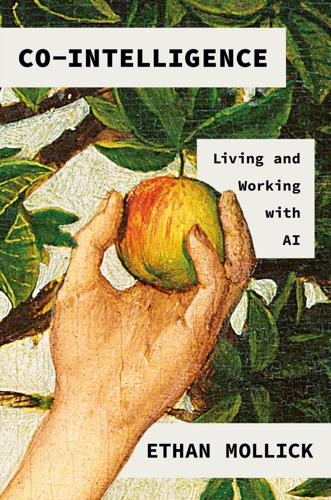
Co-Intelligence: Living and Working With AI
by
Ethan Mollick
Published 2 Apr 2024
Margo, “Steam Power, Establishment Size, and Labor Productivity Growth in Nineteenth Century American Manufacturing,” Explorations in Economic History 45, no. 2 (2008): 185–98. GO TO NOTE REFERENCE IN TEXT difficulty showing a real long-term productivity impact: J. E. Triplett, “The Solow Productivity Paradox: What Do Computers Do to Productivity?,” Canadian Journal of Economics/Revue canadienne d’Economique 32, no. 2 (1999): 309–34, https://doi.org/10.2307/136425. GO TO NOTE REFERENCE IN TEXT blown through both the Turing Test: S. Bringsjord, P. Bello, and D. Ferrucci, “Creativity, the Turing Test, and the (Better) Lovelace Test,” Minds and Machines 11.1 (2001): 3–27.
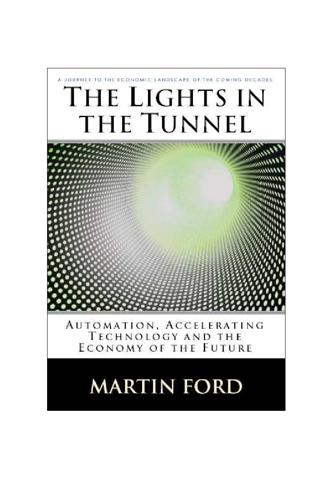
The Lights in the Tunnel
by
Martin Ford
Published 28 May 2011
Cars and airplanes now incorporate computers, but their overall design and operation is still, for the most part, what it was in 1975. NASA managed the Apollo missions and reached the moon without access to modern computing power. Even the space shuttle dates back to the introduction of the first PCs. Likewise, economists speak of something called the productivity paradox, which basically says that, at least until quite recently, the economy has not really shown the productivity gains you might expect given all the new computers that have been introduced into workplaces. The computer revolution seems, so far, to have largely turned its energy inward on itself, resulting in advances primarily in the information and communication areas.* *[ Even much of biotechnology and genetics could be considered a type of information science because it is focused on cataloging and understanding the information in our DNA. ] I have the feeling that this staggering increase in our computational capability represents a pent up resource that is poised to burst out in new and unexpected ways.
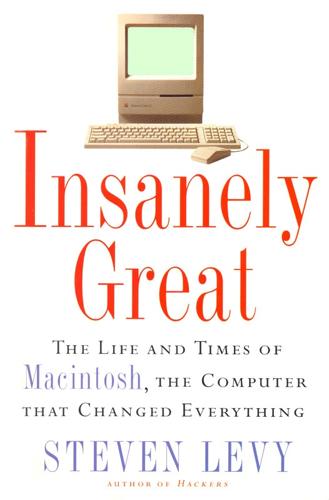
Insanely Great: The Life and Times of Macintosh, the Computer That Changed Everything
by
Steven Levy
Published 2 Feb 1994
But when Loveman ran all the numbers, totaled the investments in information technology and then compared them to the productivity totals of the industries, he was startled, if not astonished by the results. "There was no positive effect," he said. "There may even have been a negative effect." This gap between accepted reality (computers make us more productive) and the quantifiable result (they don't), has come to be known as the Productivity Paradox. A true puzzler: If computers enable us to get so much work done, in a much shorter period of time ... why can't we measure it? Where did the productivity go? Some people deny that the paradox even exists, and indeed, more recent studies indicate that the information technology investment is beginning to payoff-in part because of the ease-of-use of graphical interfaces like the Macintosh.

Whiplash: How to Survive Our Faster Future
by
Joi Ito
and
Jeff Howe
Published 6 Dec 2016
Abrams, 1995), 21. 2 The brothers hired a celebrated painter, Henri Brispot, to illustrate the scene, then turned it into the world’s first movie poster. 3 Martin Loiperdinger and Bernd Elzer, “Lumière’s Arrival of the Train: Cinema’s Founding Myth,” The Moving Image 4, no. 1 (2004): 89–118, doi:10.1353/mov.2004.0014. 4 Daniel Walker Howe, What Hath God Wrought (Oxford: Oxford University Press, 2007), 7. 5 David L. Morton, Jr. Sound Recording: The Life Story of a Technology (Baltimore: Johns Hopkins University Press, 2006), 38–39. 6 Paul A. David, “The Dynamo and the Computer, an Historical Perspective on the Modern Productivity Paradox.” American Economic Review, 80, no. 2 (1990): 355–361. 7 Ashley Lutz, “20 Predictions from Smart People That Were Completely Wrong,” Business Insider, May 2, 2012, http://www.businessinsider.com/false-predictons-2012-5?op=1#ixzz3QikI1PWu. 8 David Lieberman, “CEO Forum: Microsoft’s Ballmer Having a ‘Great Time,’” USA Today, April 30, 2007, http://usatoday30.usatoday.com/money/companies/management/2007-04-29-ballmer-ceo-forum-usat_N.htm. 9 Michel Foucault, The Archaeology of Knowledge (New York: Pantheon, 1972). 10 Thomas S.

The Hard Thing About Hard Things: Building a Business When There Are No Easy Answers
by
Ben Horowitz
Published 4 Mar 2014
They pointed to competitors with more finished products. As I listened to their lengthy objections, it became clear to me that the features the engineers wanted to add all came from Loudcloud requirements. As painful as it might be, I knew that we had to get into the broader market in order to understand it well enough to build the right product. Paradoxically, the only way to do that was to ship and try to sell the wrong product. We would fall on our faces, but we would learn fast and do what was needed to survive. Finally, I had to rebuild the executive team. I had a CFO who didn’t know software accounting, a head of sales who had never sold software, and a head of marketing who did not know our market.
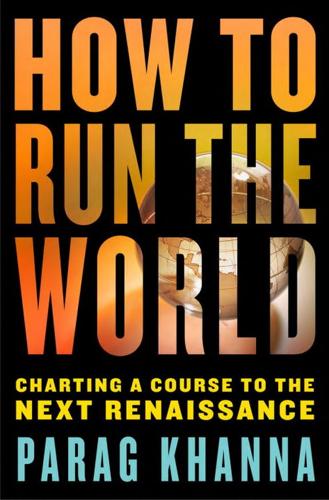
How to Run the World: Charting a Course to the Next Renaissance
by
Parag Khanna
Published 11 Jan 2011
Every year, 1.3 billion tires are shipped to third world countries to be burned or discarded in giant heaps into the oceans, polluting air, sea, and land equally. Green Rubber, a company based in rubber-rich Malaysia, has pioneered the science of devulcanizing tires and recycling them into new products. Paradoxically, the information revolution has not only failed to deliver the paperless office, it has also vastly increased electricity consumption. The world’s data centers consume more energy than all of Sweden. Air-conditioning accounts for 96 percent of the electricity that data centers use, with only 4 percent needed to actually store data.
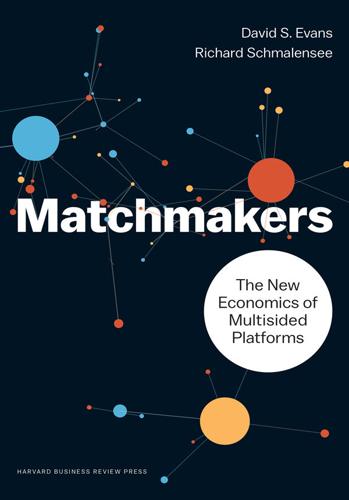
Matchmakers: The New Economics of Multisided Platforms
by
David S. Evans
and
Richard Schmalensee
Published 23 May 2016
We expect the use of cash would be slightly lower in 2015. 18. Newspaper Association of America, “Newspaper Circulation Volume,” http://www.naa.org/Trends-and-Numbers/Circulation-Volume/Newspaper-Circulation-Volume.aspx. 19. Paul David, “The Dynamo and the Computer: An Historical Perspective on the Modern Productivity Paradox,” American Economic Review 80, no. 2 (1990), 356. 20. Ibid., 356–357. 21. Kirsten Korosec, “Another Ride-Sharing Startup Becomes a Unicorn: BlaBlaCar Valued at $1.6 Billion,” Fortune, September 16, 2015, http://fortune.com/2015/09/16/blablacar-unicorn-list/. Index Abrams, Jonathan, 145 access charges, 94–95, 97 advertising, 29, 35–36 apps and, 48 design in balancing externalities with, 128–129 development of, 200–201 newspapers and, 99–100 pricing and, 154 search engine pricing and, 93–94 two-step strategy and, 79 Advertising Age, 200–201 Affirm, 80–81 agglomeration effects, 132–133 Ahrendts, Angela, 194, 195 Airbnb, 8, 12, 18, 197–198 Akamai, 43 algorithms, matching with, 127 Alibaba, 58–61 critical mass of, 68 fraud controls in, 138 ignition strategy at, 79 platform of, 63–65 pricing in, 82 retail, 62–63 Alimama, 64 Alipay, 62–63, 64 Allaire, Jeremy, 82 Amazon Alibaba compared with, 64 Cloud services, 44 ecosystem for, 105–106 Marketplace, 106 reseller platform in, 107–108 American Express, 2, 95, 96, 157 Travelers Cheques and, 189–190 anchor tenants, 80, 130, 131 Android, 47–48, 101–102 ecosystem for, 110–113, 114–119 Apple, 8, 26–27, 35, 109 App Store, 80, 117, 139, 142–143 Apple Pay, 58, 149–150, 156–164 ecosystem for, 110, 112–115, 117–119 iPhone, 101–102, 110, 112–115, 117–119 market cap of, 40 operating system, 47–48 stores, 195 apps, 47–48.
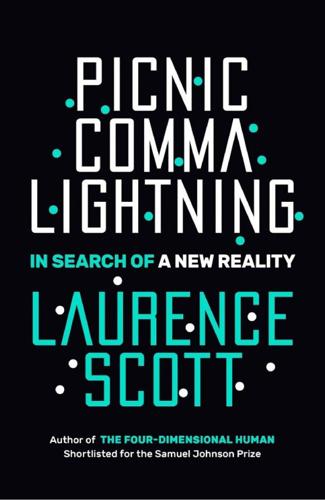
Picnic Comma Lightning: In Search of a New Reality
by
Laurence Scott
Published 11 Jul 2018
While Euripides gets the laughs with his inside/outside schtick, we might think instead about his slave. Away from the political stage, the slave’s remark that the playwright is both ‘within’ and ‘not within’ the home, because his mind is off wandering in imagined lands, offers us a more seductive, productive paradox. The only stable form of obscenity exists in the imagination, that natural habitat for things that are both real and unreal, and also neither real nor unreal. Our imaginations are often out roaming through hidden rooms, back rooms, far-off rooms, long-forgotten rooms, filling them with furniture and their own emotional weather.

Capitalism Without Capital: The Rise of the Intangible Economy
by
Jonathan Haskel
and
Stian Westlake
Published 7 Nov 2017
Crawford, Rowena, Dave Innes, and Cormac O’Dea. 2016. “Household Wealth in Great Britain: Distribution, Composition and Changes 2006–12.” Fiscal Studies 37 (1): 35–54. doi:10.1111/j.1475-5890.2016.12083. David, Paul. 1990. “The Dynamo and the Computer: An Historical Perspective on the Modern Productivity Paradox.” American Economic Review 80 (2): 355–61. Davies, Daniel, and Tess Read. 2015. Secret Life of Money—Everyday Economics Explained. Metro. Davies, Richard, Andrew Haldane, Mette Nielsen, and Silvia Pezzini. 2014. “Measuring the Costs of Short-Termism.” Journal of Financial Stability 12 (June): 16–25.
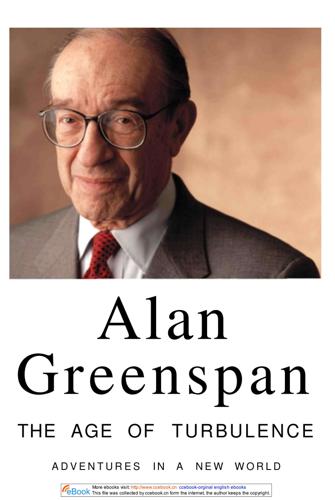
The Age of Turbulence: Adventures in a New World (Hardback) - Common
by
Alan Greenspan
Published 14 Jun 2007
N e w York: Touchstone, 1990. . Titan: The Life of John D. Rockefeller, Sr. N e w York: R a n d o m House, 1998. David, Paul A. "The D y n a m o and t h e C o m puter: An Historical Perspective on t h e Modern Productivity Paradox." American Economic Review 80, no. 2 (May 1989): 3 5 5 - 6 1 . See also David's longer paper: " C o m p u t e r and D y n a m o : T h e Modern Productivity Paradox in a Not-Too-Distant Mirror." Center for Economic Policy Research 172, Stanford University (July 1989). Dornbusch, Rudiger, and Sebastian Edwards, eds. The Macroeconomics of Populism in Latin America. Chicago: University of Chicago Press, 1991.
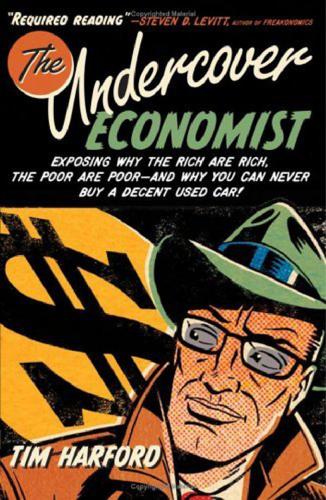
The Undercover Economist: Exposing Why the Rich Are Rich, the Poor Are Poor, and Why You Can Never Buy a Decent Used Car
by
Tim Harford
Published 15 Mar 2006
Robert Gordon has given the definitive skeptical statement in “Does the ‘New Economy’ Measure up to the Great Inventions of the Past?” Journal of Economic Perspectives 4, no.14 (Fall 2000): 49–74. Paul David’s argument that new technology takes time to have a real economic impact is most famously expounded in “The Dynamo and the Computer: An Historical Perspective on the Modern Productivity Paradox,” The American Economic Review Papers and Proceedings, May 1990, 355–61. The results of my lost bet with John Kay are in the Financial Times, October 29, 1999, or at http:// www.johnkay.com/articles/search.php?action=view&doc_id=127&date=&title=&topic=. Although I am generally dismissive of the idea that Internet companies enjoy a first-mover advantage, I think there is at least one important exception.
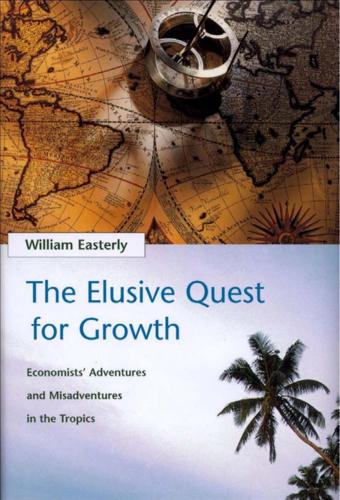
The Elusive Quest for Growth: Economists' Adventures and Misadventures in the Tropics
by
William R. Easterly
Published 1 Aug 2002
and References 317 Dadush, Uri, Ashok Dhareshwar, and Ron Johannes. 1994. ”Are Private Capital Flows to Developing Countries Sustainable?” World Bank policy research working paper 1397. Daly, Herman. 1992. “Sustainable Development Is Possible Only If We Forgo Growth.” Earth Island Journal 7, no. 2 (spring). David, Paul A. 1990. “The Dynamo and the Computer: An Historical Perspective on the Modern Productivity Paradox.” American Economic Review 80, no. 2 (May). Davis Steven J., and JohnHaltiwanger. 1998. ”Measuring Gross Worker and Job Flows.” In J. Haltiwanger, M. Manser, and R. Topel, eds., Labor Statistics Measurement Issues. Chicago: University of Chicago Press. De Long, J. Bradford. 1988. ”Productivity Growth, Convergence, and Welfare: Comment.”

The Measure of Progress: Counting What Really Matters
by
Diane Coyle
Published 15 Apr 2025
Discourses on the publick revenues, and on the trade of England. J. Knapton. Davenport, T. H., and Beck, J. C. (2001). The attention economy: Understanding the new currency of business. Harvard Business School Press. David, P. A. (1990). The dynamo and the computer: An historical perspective on the modern productivity paradox. American Economic Review, 80(2), 355–361. https://www.jstor.org /stable/2006600 Deaton, A. (2008). Income, health, and well-being around the world: Evidence from the Gallup World Poll. Journal of Economic Perspectives, 22(2), 53–72. https://www.jstor.org/stable /27648241 Dedrick, J., and Kraemer, K.
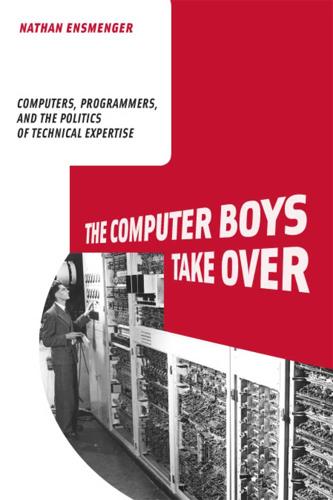
The Computer Boys Take Over: Computers, Programmers, and the Politics of Technical Expertise
by
Nathan L. Ensmenger
Published 31 Jul 2010
Under IBM’s substantial umbrella a broad and diverse set of subsidiary industries flourished, including not just manufacturers of complementary (or even competing) hardware products but also programming services companies, time-sharing “computer utilities,” and independent data processing service providers. When we consider such subsidiary industries, our estimate of the total size of the computer industry almost doubles.13 And yet by the late 1960s there were signs of trouble in paradise. Foreshadowing the “productivity paradox” debate of later decades, hints began to appear in the literature that a growing number of corporations were questioning the value of their investment in computing. As an article in 1969 in Fortune magazine entitled “Computers Can’t Solve Everything” described the situation, “After buying or leasing some 60,000 computers during the past fifteen years, businessmen are less and less able to state with assurance that it’s all worth it.”
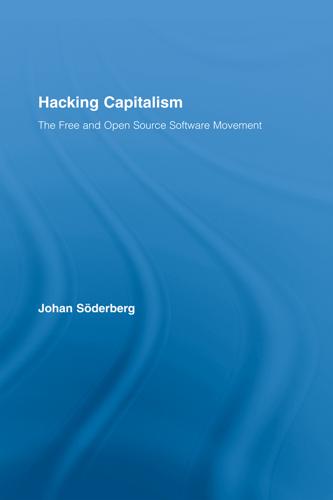
Hacking Capitalism
by
Söderberg, Johan; Söderberg, Johan;
Manuel Castells—From the Informational City to the Information Age, London: Sage, 2004. ed. Wilkinson, Elizabeth, and L. Willoughby. On the Aesthetic Education of Man—In a Series of Letters/Friedrich Schiller, Oxford: Clarendon Press, 1982. ed. Willcocks, Leslie, and Stephanie Lester. Beyond the IT Productivity Paradox, Chichester: Wiley, 1999. Williams, Raymond. Problems in Materialism and Culture, London: Verso, 1980. ——— Towards 2000, London: Chatto & Windus, 1983. ed. Williamson, Oliver, and Sidney Winter. The Nature of the Firm: Origins, Evolution, and Development: New York: Oxford University Press, 1993.
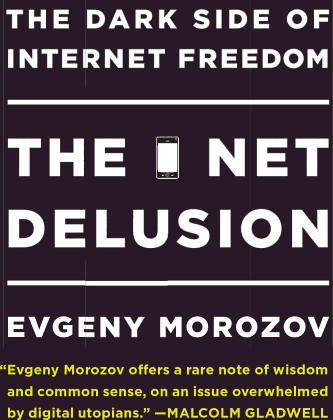
The Net Delusion: The Dark Side of Internet Freedom
by
Evgeny Morozov
Published 16 Nov 2010
Fireside Politics: Radio and Political Culture in the United States, 1920-1940. Baltimore: Johns Hopkins University Press, 2005. Czitrom, Daniel J. Media and the American Mind: From Morse to McLuhan. Chapel Hill: University of North Carolina Press, 1982. David, P. A. “The Dynamo and the Computer: An Historical Perspective on the Modern Productivity Paradox.” American Economic Review 80, no. 2 (1990): 355-361. de la Peña, Carolyn. “‘Slow and Low Progress,’ or Why American Studies Should Do Technology.” American Quarterly 58 (2006): 915-941. de la Peña, Carolyn, and Siva Vaidhyanathan, eds. Rewiring the “Nation”: The Place of Technology in American Studies.
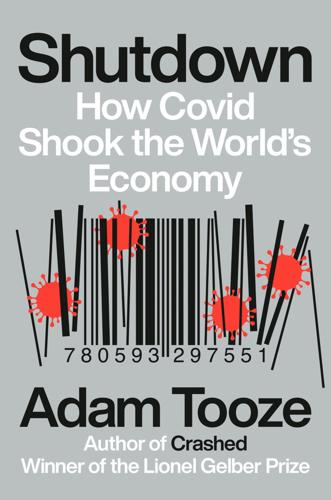
Shutdown: How COVID Shook the World's Economy
by
Adam Tooze
Published 15 Nov 2021
Jaffe, “A $4.5 Billion Trump Food Program Is Running Out of Money Early, Leaving Families Hungry and Food Assistance Charities Scrambling,” Washington Post, December 8, 2020. 59. A. Bhattarai and H. Denham, “Stealing to Survive: More Americans Are Shoplifting Food as Aid Runs Out During the Pandemic,” Washington Post, December 10, 2020. CHAPTER 12. VACCINE RACE 1. P. A. David, “The Dynamo and the Computer: An Historical Perspective on the Modern Productivity Paradox,” American Economic Review 80, no. 2 (1990): 355–61. 2. R. Solow, “We’d Better Watch Out,” New York Times Book Review, July 12, 1987, 36. 3. L. Light, “Good Vaccine News Has Immediate Impact on the Stock Market,” Chief Investment Officer, September 2, 2020. 4. A. Scaggs, “High-Yield Bonds Are Surging While Treasuries Slump on Vaccine News,” Barron’s, November 2, 2020.

The Rational Optimist: How Prosperity Evolves
by
Matt Ridley
Published 17 May 2010
p. 234 ‘pulling ploughs by cable through a field at the Menier estate near Paris’. Rolt, L.T.C. 1967. The Mechanicals. Heinemann. p. 234 ‘like the computer it took decades to show up in the productivity statistics’. David, P.A. 1990. The dynamo and the computer: an historical perspective on the modern productivity paradox. American Economic Review 80:355–61. p. 234 ‘One recent study in the Philippines’. Barnes, D.F. (ed.). 2007. The Challenge of Rural Electrification. Resources for the Future Press. p. 235 ‘Joule for joule, wood is less convenient than coal, which is less convenient than natural gas, which is less convenient than electricity, which is less convenient than the electricity currently trickling through my mobile telephone.’
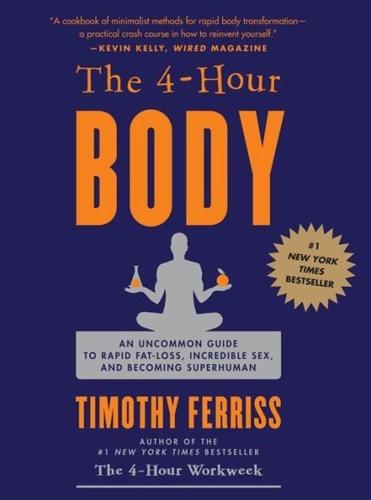
The 4-Hour Body: An Uncommon Guide to Rapid Fat-Loss, Incredible Sex, and Becoming Superhuman
by
Timothy Ferriss
Published 1 Dec 2010
Pine nuts, 5.7 oz (2 oz = 140 mg) 10. Brazil nuts, 6.3 tbsp (2 tbsp = 128 mg) NO DAIRY? REALLY? DOESN’T MILK HAVE A LOW GLYCEMIC INDEX? It’s true that milk has a low glycemic index (GI) and a low glycemic load (GL). For the latter, whole milk clocks in at an attractive 27. Unfortunately, dairy products paradoxically have a high insulinemic response on the insulinemic index (II or InIn) scale. Researchers from Lund University in Sweden have examined this surprising finding: Despite low glycemic indexes of 15–30, all of the milk products produced high insulinemic indexes of 90–98, which were not significantly different from the insulinemic index of the reference bread [generally white bread].… Conclusions: Milk products appear insulinotropic as judged from 3-fold to 6-fold higher insulinemic indexes than expected from the corresponding glycemic indexes.
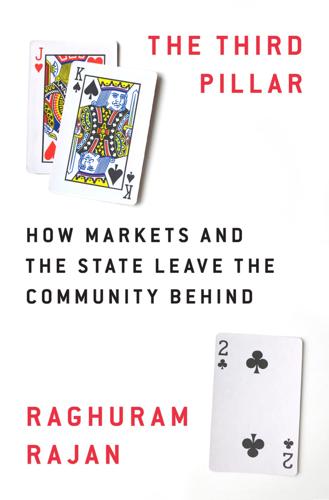
The Third Pillar: How Markets and the State Leave the Community Behind
by
Raghuram Rajan
Published 26 Feb 2019
Enoch Powell, “Rivers of Blood” (speech), Conservative Association meeting, Birmingham, UK, April 20, 1968, transcript, http://www.telegraph.co.uk/comment/3643823/Enoch-Powells-Rivers-of-Blood-speech.html. 22. Gordon, Rise and Decline of American Growth; Cowen, Great Stagnation. 23. Gordon, Rise and Decline of American Growth, 13. 24. Paul A. David, “The Dynamo and the Computer: An Historical Perspective on the Modern Productivity Paradox,” The American Economic Review 80, no. 2, (May, 1990): 355–61. 25. James, Europe Reborn, 390–91. 26. See Chad Syverson, “Challenges to Mismeasurement Explanations for the U.S. Productivity Slowdown,” Journal of Economic Perspectives 31 (Spring 2016): 165–86. 27. Judt, Postwar, 541. 28.

Slouching Towards Utopia: An Economic History of the Twentieth Century
by
J. Bradford Delong
Published 6 Apr 2020
Habakkuk, American and British Technology in the Nineteenth Century: The Search for Labour Saving Inventions, Cambridge: Cambridge University Press, 1962; David A. Hounshell, From the American System to Mass Production: The Development of Manufacturing Technology in the United States, 1850–1920, Wilmington: University of Delaware Press, 1978. 29. Paul A. David, “The Dynamo and the Computer: An Historical Perspective on the Modern Productivity Paradox,” American Economic Review 80, no. 2 (May 1990): 355–361. 30. Daniel Raff, “Wage Determination Theory and the Five-Dollar Day at Ford: A Detailed Examination” (PhD diss., Massachusetts Institute of Technology, 1987); Daniel M.G. Raff and Lawrence H. Summers, “Did Henry Ford Pay Efficiency Wages?

The Rise of the Network Society
by
Manuel Castells
Published 31 Aug 1996
David, P.A. (1975) Technical Choice Innovation and Economic Growth: Essays on American and British Experience in the Nineteenth Century, London: Cambridge University Press. —— and Bunn, J.A. (1988) “The economics of gateways’ technologies and network evolution: lessons from the electricity supply industry”, Information Economics and Policy, 3 (April): 165–202. David, Paul (1989) Computer and Dynamo: the Modern Productivity Paradox in Historical Perspective, Stanford, CA: Stanford University Center for Economic Policy Research, working paper No. 172. Davis, Diane (1994) Urban Leviathan: Mexico in the 20th Century, Philadelphia, PA: Temple University Press. Davis, Mike (1990) City of Quartz, London: Verso. Dean, James W., Yoon, Se Joon and Susman, Gerald I. (1992) “Advanced manufacturing technology and organization structure: empowerment or subordination?”

Growth: From Microorganisms to Megacities
by
Vaclav Smil
Published 23 Sep 2019
Daugherty et al., Power Capacity and Production in the United States. Washington, DC: US Geological Survey, pp. 5–112. Davenport, C. B. 1926. Human growth curve. Journal of General Physiology 10(2):205–216. David, P. 1990. The dynamo and the computer: An historical perspective on the modern productivity paradox. American Economic Review 80:355–361. David, S. 2003. The Indian Mutiny. New York: Penguin. Davis, J. 2011. Mercedes-Benz history: Diesel passenger car premiered 75 years ago. http://www.emercedesbenz.com/autos/mercedes-benz/classic/mercedes-benz-history-diesel-passenger-car-premiered-75-years-ago/.

Artificial Intelligence: A Modern Approach
by
Stuart Russell
and
Peter Norvig
Published 14 Jul 2019
Planning graph heuristics for belief space search. JAIR, 26, 35–99. Brynjolfsson, E. and McAfee, A. (2011). Race Against the Machine. Digital Frontier Press. Brynjolfsson, E. and McAfee, A. (2014). The Second Machine Age. W. W. Norton. Brynjolfsson, E., Rock, D., and Syverson, C. (2018). Artificial intelligence and the modern productivity paradox: A clash of expectations and statistics. In Agrawal, A., Gans, J., and Goldfarb, A. (Eds.), The Economics of Artificial Intelligence: An Agenda. University of Chicago Press. Bryson, A. E. and Ho, Y.-C. (1969). Applied Optimal Control. Blaisdell. Bryson, A. E. (1962). A gradient method for optimizing multi-stage allocation processes.